In this article, I will talk about the best plants for the west-facing side of the house.
A part of the ideal settings for most plants is partial sunlight and shade; this is exactly what west-facing gardens offer.
The gardens with a west view have shade in the morning, followed by plenty of sunshine throughout the afternoon.
- There is a significant number of options you can choose from when growing plants in west-facing gardens.
- West-facing gardens have shade in the mornings and sunlight in the daytime.
- There are lots of options when choosing plants for west-facing gardens.
30 Plants for The West-Facing Side of The House
- Verbena Bonairiensis
- Elder Tree
- Phlox Paniculata
- Tulips
- Camellia Japonica
- Jasmine
- Phemeranthus Calycinus
- Daphne
- Campanula
- Penstemon
- Geraniums
- Ceanothus
- Solomon’s seal
- Leucanthemum x superbum
- Alchemilla Mollis
- Coneflower
- Creeping Thyme
- Texas Ranger
- American Beautyberry
- Hosta
- Meadow sage
- Peppermint
- Rudbeckia
- Dusty miller
- Lamb’s ear
- Arkansas blue star
- Catmint
- Clematis
- Coral honeysuckle
- Butterfly bush
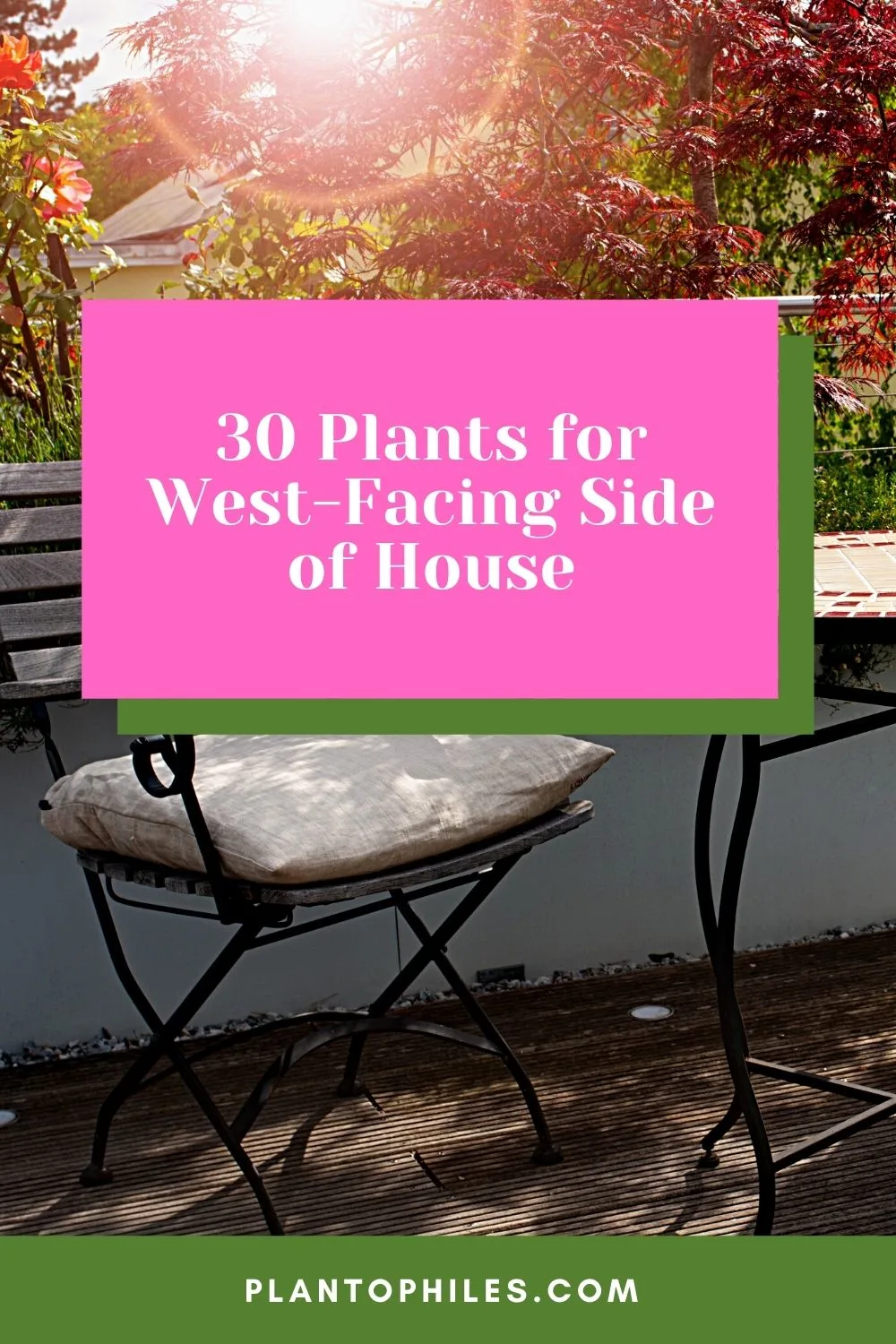
30 Plants for West-Facing Side of the House
Read about the best plants for west-facing gardens.
Plants for The West-Facing Side of The House
1. Verbena Bonairiensis
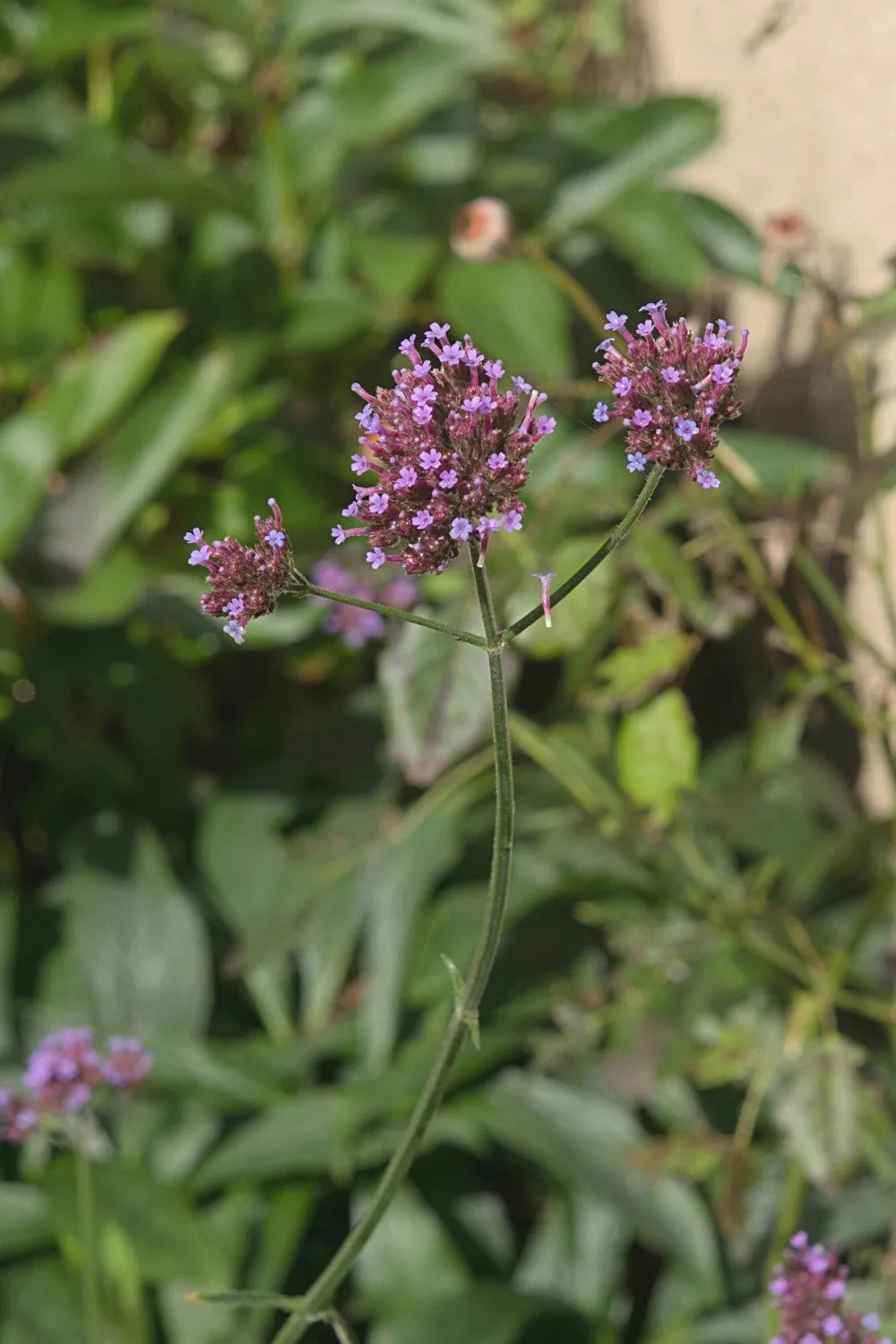
Verbena Bonairiensis loves the filtered sunlight it’s getting from the west-facing side of the house
This beauty is an attractive tall plant with swaying stems that end with beautiful deep-lilac flowers that bloom throughout early summer until the first frost.
It is one of 250 different species in the Verbena genus according to the University of Wisconsin.
It grows happily in west-facing gardens that get filtered sunlight in the daytime and partial shade in the mornings.
Verbena Bonairiensis prefers simple, well-draining soils and occasional watering. It can reach a height of approximately 3 to 6 feet (90 to 180 cm) when placed in ideal conditions, such as a west-facing garden.
Moreover, the flowers look wonderful in a glass vase and add a touch of nature. The plant attracts butterflies to be ready for some extra color in your house.
- Scientific name: Verbena Bonairiensis
- Light requirements: moderate to high
- Watering requirements: low to moderate
- Growth rate: moderate
- Temperature: 70 to 80 degrees Fahrenheit
- pH: 5.6 to 7.8
- Care: low to moderate
2. Elder Tree
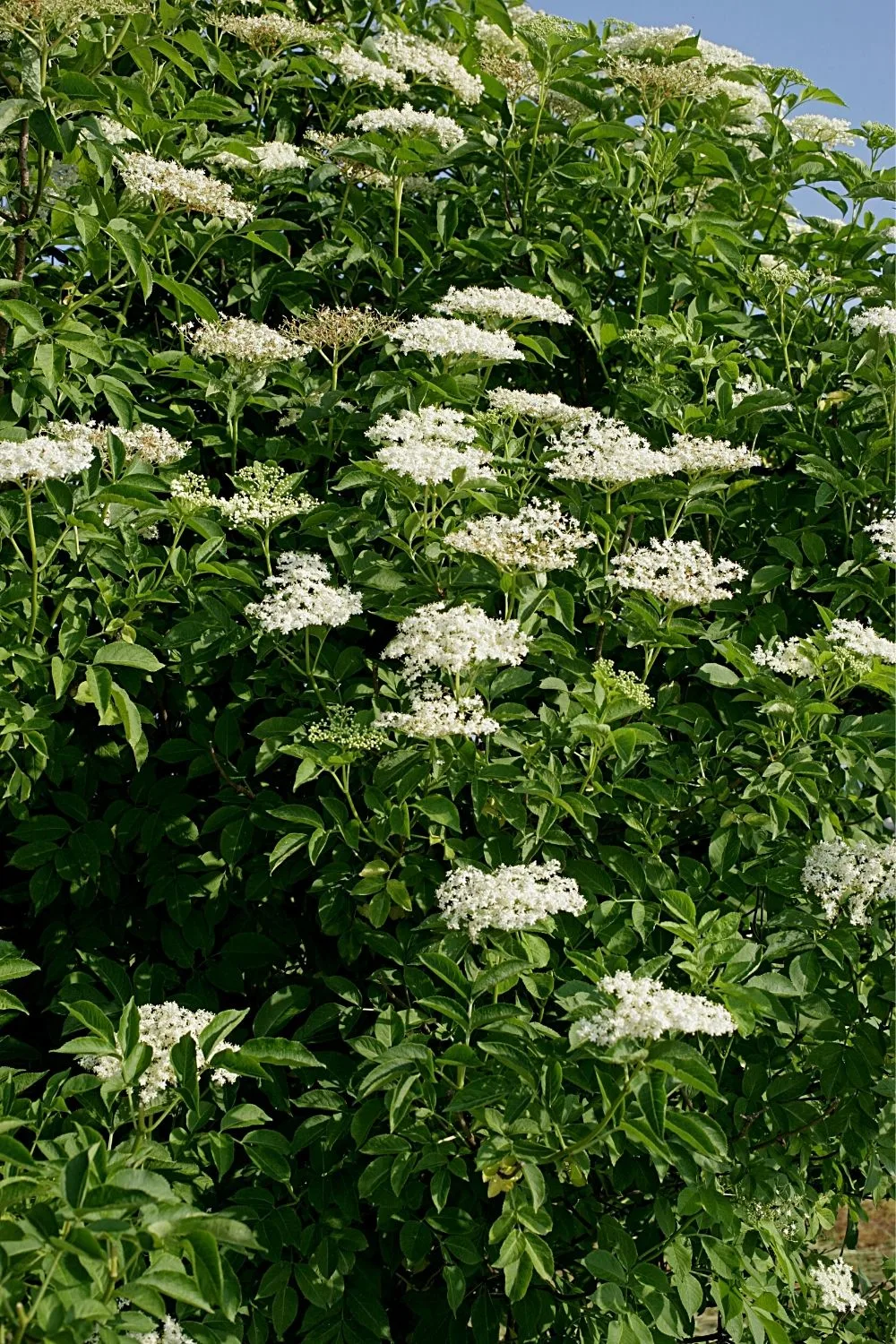
Elder Tree only requires minimal care, but make sure it stays hydrated when planted in the west-facing side of the house
A great choice for west-facing gardens is Elder Tree. This plant thoroughly enjoys the afternoon sun and partial shade in the morning; both are important for its adequate growth.
This plant species has been around for generations hence the name. The fruits can be used in syrups, wines, and cordials and have attractive fern-like foliage.
The shiny blackberries come in a wide variety; the common ones include Black Beauty, Marginata, Aurea, and Black Lace.
Elder Tree has a pretty simple routine-average soil, occasional watering, and monthly feeding. It needs minimal attention, but ensure that you maintain hydration levels.
Once the fruits bloom, don’t leave them for too long as birds are quick to feast on them.
- Scientific name: Sambucus
- Light requirements: moderate to high
- Watering requirements: low to moderate
- Growth rate: moderate
- Temperature: unknown
- pH: 5.5 to 6.5
- Care: low to moderate
3. Phlox Paniculata
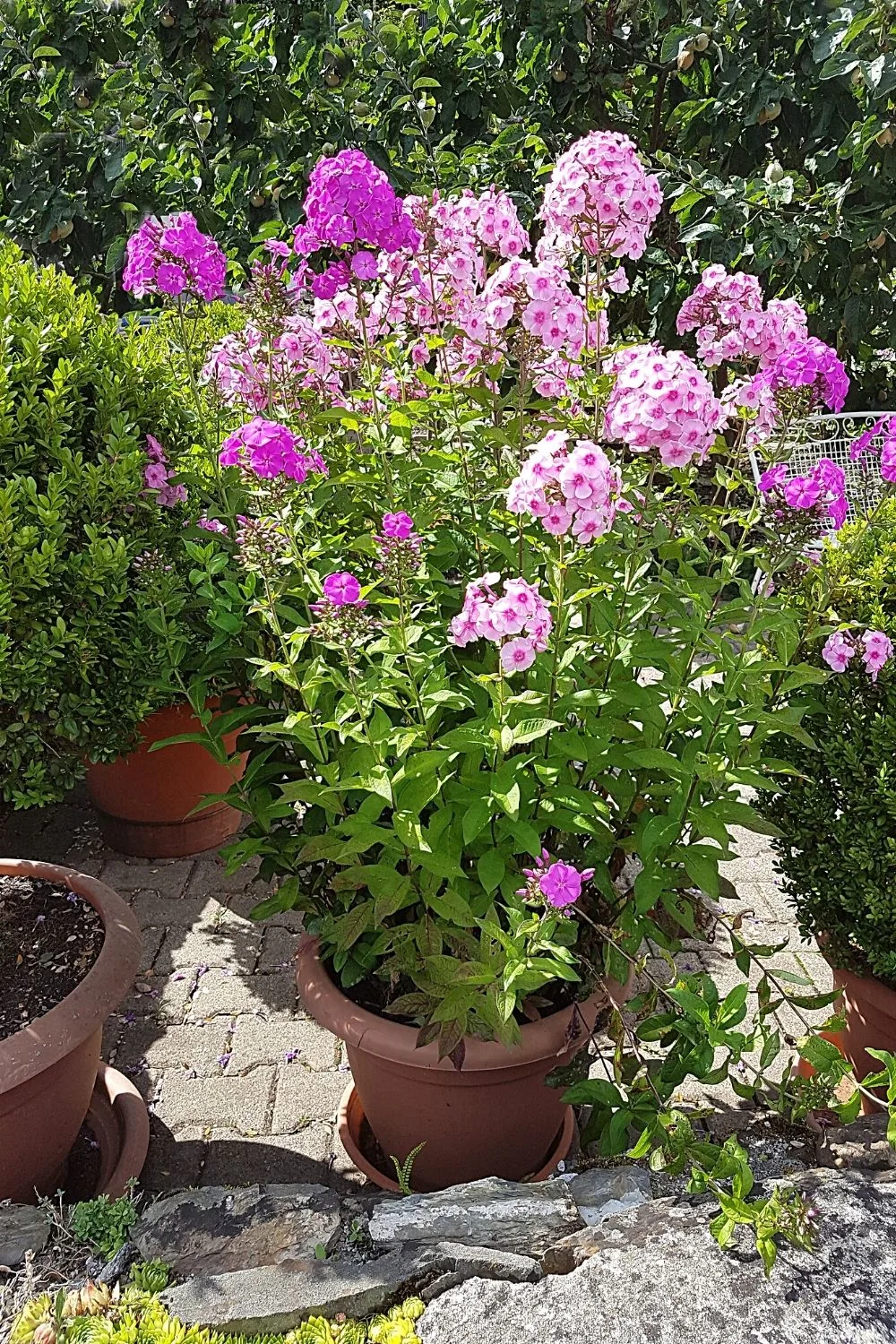
Phlox Paniculata requires moderate to full sun coverage, which a plant can get when you grow it in the west-facing side of the house
A true beauty is the Phlox Paniculata, a plant requiring moderate to full sun and light soils with occasional watering. It gives rise to beautiful showy flowers that come up from summer through fall.
The flowers are bicolored, ranging from shades of white, red, pink, and rose.
The flowers also have a great fragrance, so plant this beauty near a window where the fragrance diffuses into the house.
The Phlox Paniculata has a fairly manageable care routine that includes moderate watering, fertile, organic soils, and occasional feeding.
- Scientific name: Phlox Paniculata
- Light requirements: moderate to high
- Watering requirements: low to moderate
- Growth rate: moderate
- Temperature: 68 to 74 degrees Fahrenheit
- pH: 6 to 8
- Care: low to moderate
4. Tulips
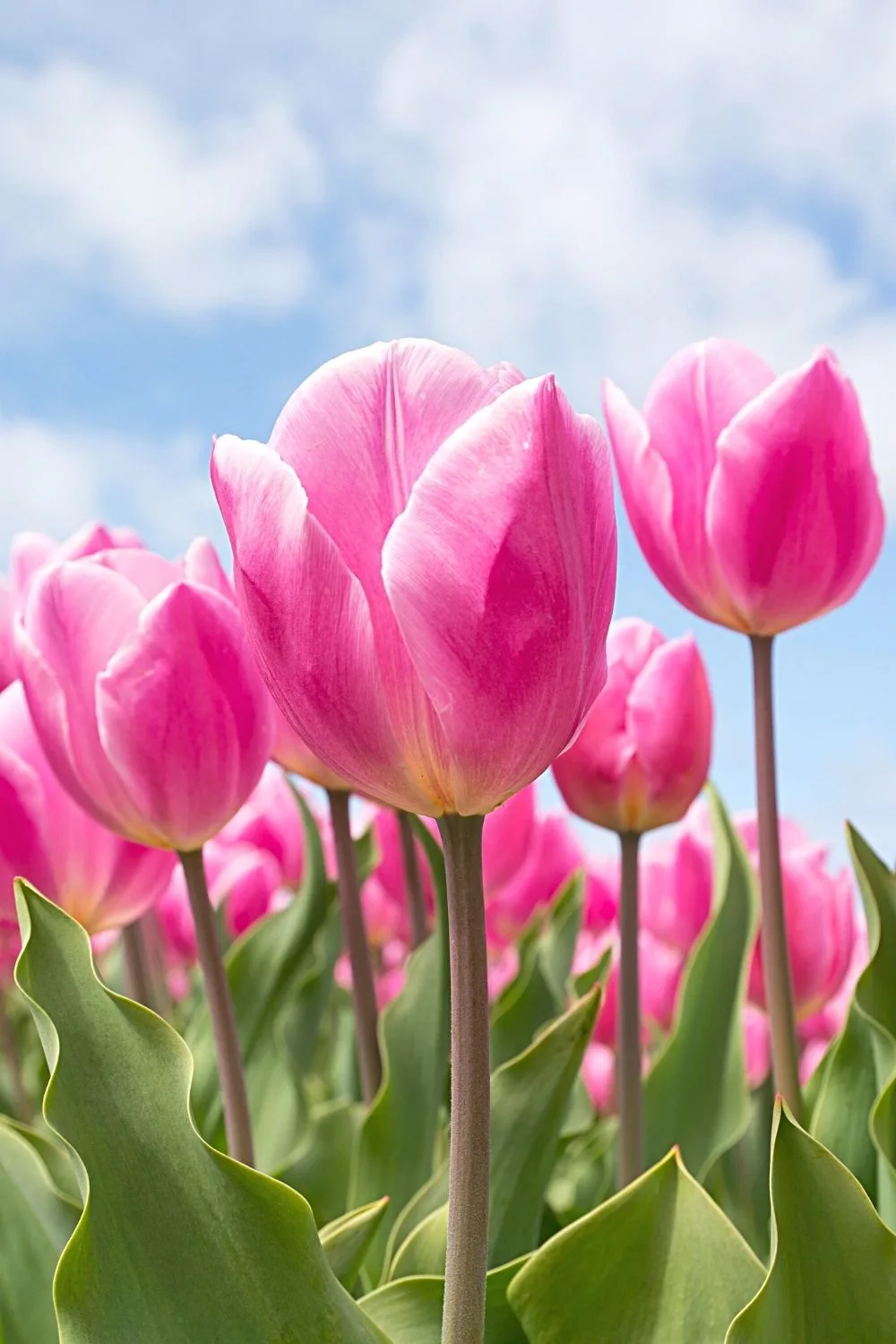
Tulips love the cool mornings that the west-facing side of the house provides
Add some color to your garden with tulips; these are plants that will have you relaxed instantly after a long day of work.
They prefer west-facing gardens as they are cool in the mornings and warm and lovely in the daytime.
Tulips are bright, fun plants that come in a great number of choices, such as red, white, pink, and yellow. Plant these beauties in the autumn and enjoy your tulips all spring.
- Scientific name: Tulipa
- Light requirements: moderate to high
- Watering requirements: low to moderate
- Growth rate: moderate
- Temperature: under 55 degrees Fahrenheit
- pH: 6 to 6.5
- Care: low to moderate
5. Camellia Japonica
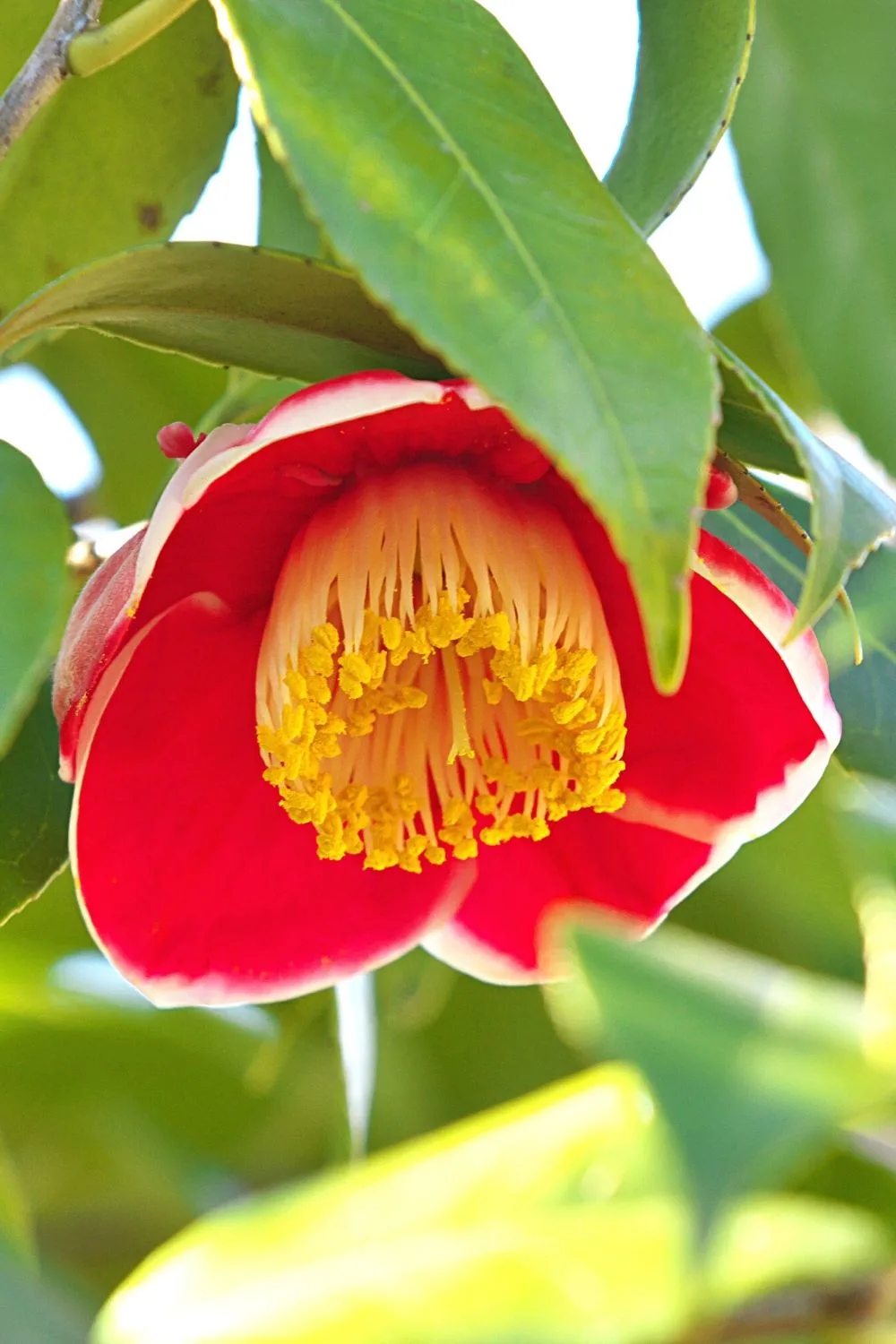
Don’t leave Camellia Japonica too long under the sun in the west-facing side of the house as it will lose its characteristic color
One of the brightest plants you’ll see in your west-facing garden is the Camellia japonica. It enjoys partial shade in the morning and bright sun in the afternoons.
Please make sure not to leave it in the sun for too long, as the plant loses its characteristic color.
A native of China, Korea, and Japan, the Camellia japonica is an evergreen shrub offering gorgeous reddish-pink to rose-pink flowers.
Apart from placing them in filtered sunlight, ensure you protect them from cold, dry winds in the winter season. Once fully established, it doesn’t need a lot of care.
- Scientific name: Camellia japonica
- Light requirements: moderate to high
- Watering requirements: low to moderate
- Growth rate: moderate
- Temperature: 10 to 90 degrees Fahrenheit
- pH: 5.8 to 6.5
- Care: low to moderate
6. Jasmine
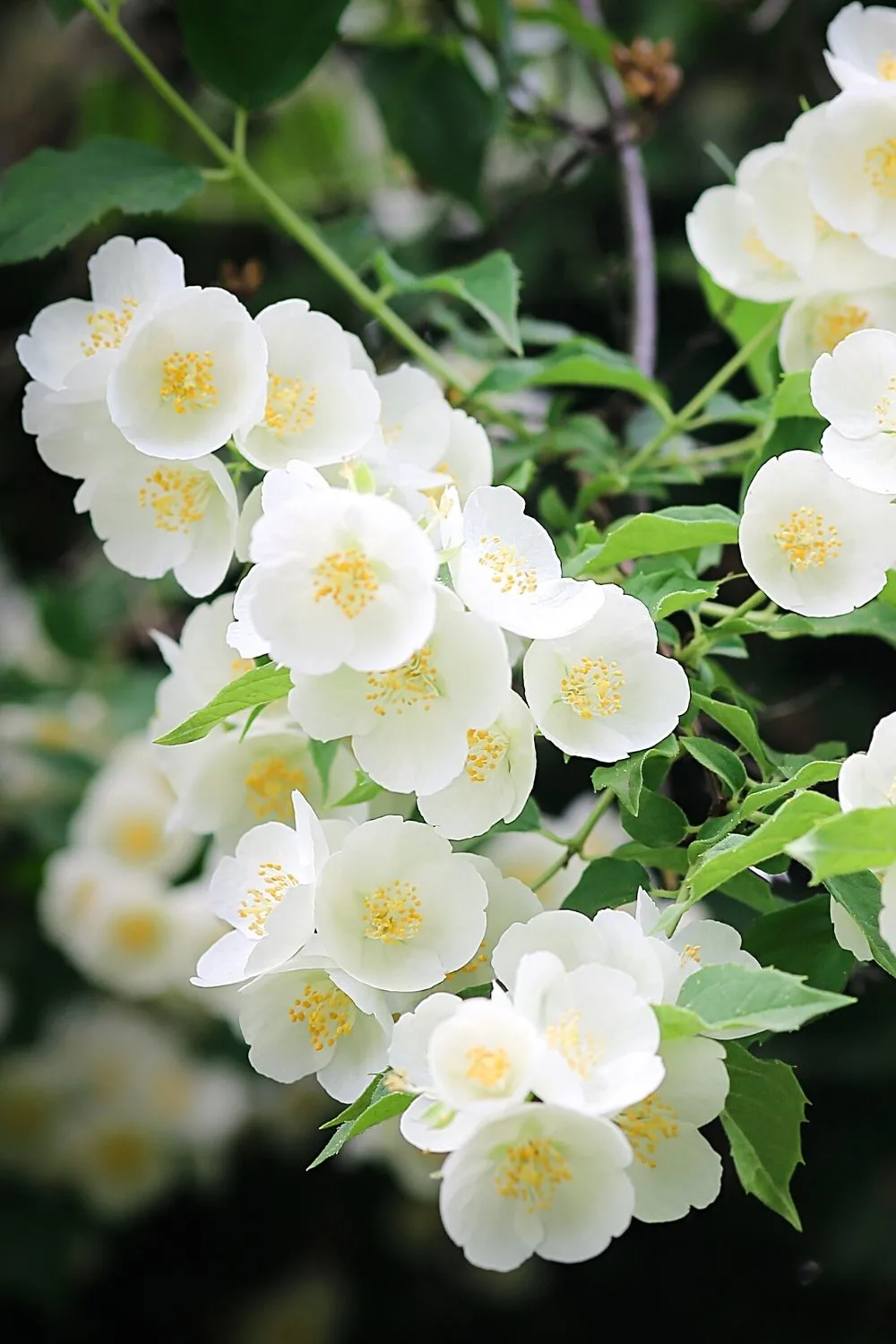
Jasmine is a climbing plant that produces white blooms that thrive in the west-facing side of the house
An absolute favorite of several house gardeners is the jasmine plant due to its beautiful looks and manageable care.
These are climbing plants that offer stunning white blooms that add a tropical look to any space.
Plant it into well-draining, fertile soils and encourage climbing for the jasmines to last several years. Furthermore, ensure that your trellis is strong enough to hold the plant.
- Scientific name: Jasminum
- Light requirements: moderate to high
- Watering requirements: low to moderate
- Growth rate: moderate
- Temperature: 60 to 75 degrees Fahrenheit
- pH: 4.9 to 8.3
- Care: low to moderate
7. Phemeranthus Calycinus
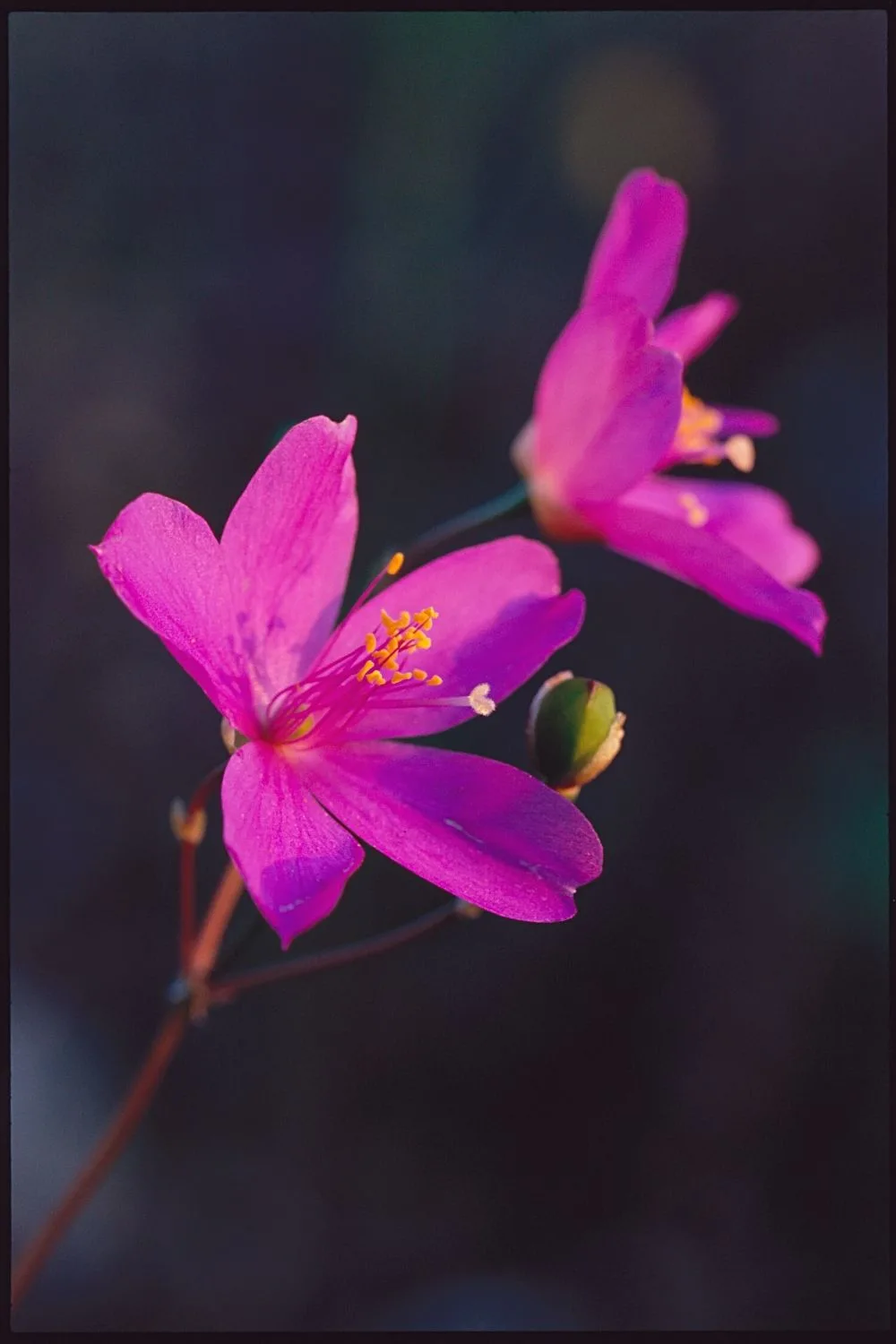
Phemeranthus Calycinus, aka the Fame Flower, loves the cool shade that the west-facing side of the house provides
Commonly known as the Fame flower, Phemeranthus calycinus is a sight to behold. The plant has unique habits, including openings its flower only in the warm afternoon sun.
Moreover, it enjoys the morning shade and occasional watering.
West-facing gardens with filtered sunlight are ideal for this beauty. When mature, it gives rise to rose-red or rose-violet blooms that add color to your garden.
It is also drought-resistant and so does well even in hot climates. Please plant it in well-draining soils and add good-quality fertilizers when needed.
- Scientific name: Phemeranthus calycinus
- Light requirements: moderate to high
- Watering requirements: low to moderate
- Growth rate: moderate
- Temperature: 80 degrees Fahrenheit
- pH: 5.6 to 7.8
- Care: low to moderate
8. Daphne
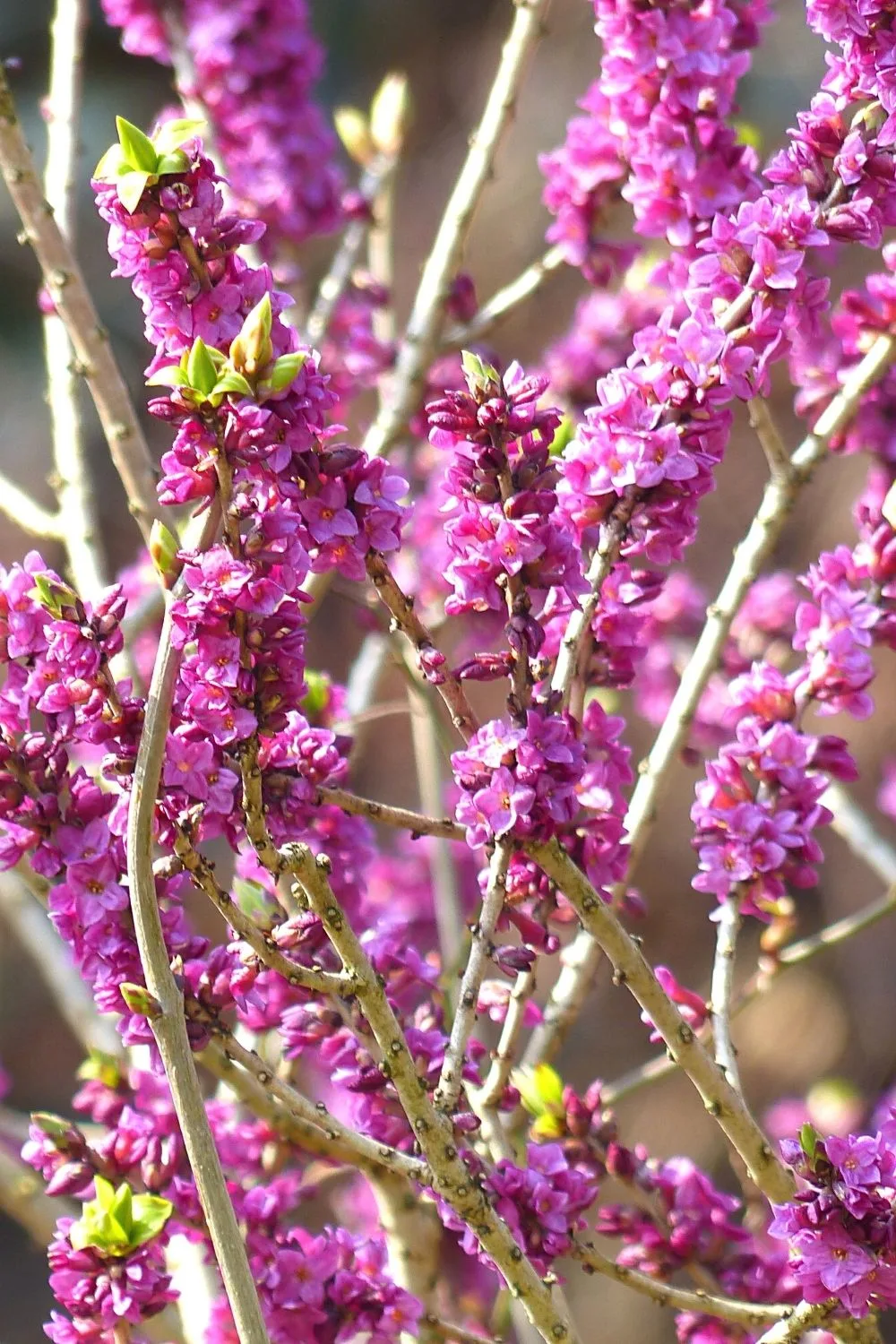
Another stunning plant to add to your growing west-facing side of the house plant collection is Daphne
A lovely addition to your west-facing garden will be Daphne. It is known for its late blooming and beautiful blooms that sprout in winters.
It is low-growing and so is ideal for rock gardens. Put it in light, acidic soils with some mulch for optimal growth.
- Scientific name: Daphne cneorum
- Light requirements: moderate to high
- Watering requirements: low to moderate
- Growth rate: moderate
- Temperature: over -3 degrees Fahrenheit
- pH: 6 to 6.5
- Care: low to moderate
9. Campanula
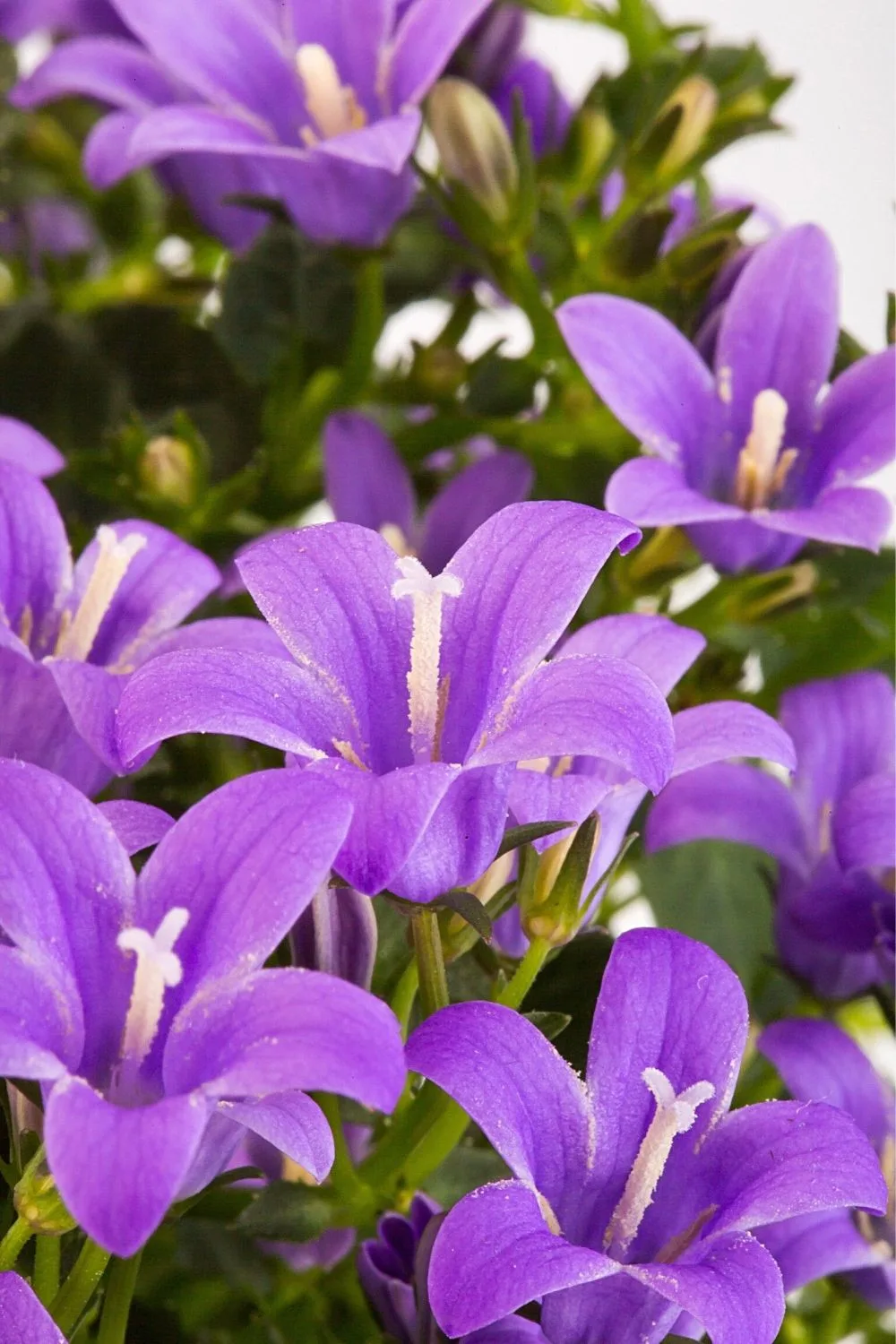
Campanula, aka Bellflower, thrives best in the west-facing side of the house
Campanula, alternatively known as Bellflower, is a stunning plant that grows exceptionally well in west-facing gardens. The plant likes cool mornings and warm afternoons.
However, do protect them from the direct harsh sun in the daytime.
The blooms range from light blue to lavender, with most having hues of white and pink. These should be planted in fertile and well-draining alkaline soils for optimal growth.
- Scientific name: Campanula
- Light requirements: moderate to high
- Watering requirements: low to moderate
- Growth rate: moderate
- Temperature: 65 to 68 degrees Fahrenheit
- pH: 6 to 8
- Care: low to moderate
10. Penstemon
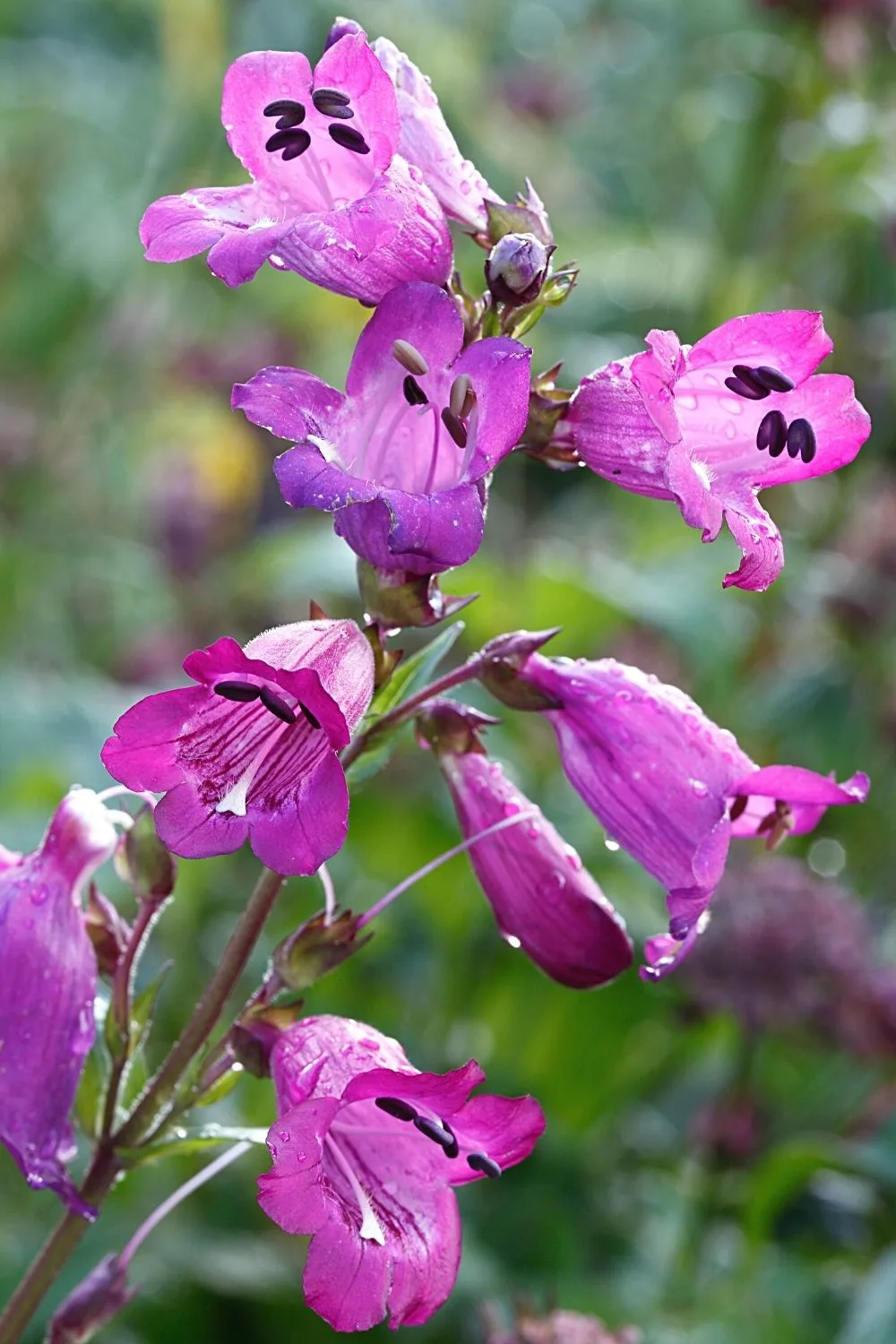
Penstemon is another great plant choice to grow in the west-facing side of the house
Penstemon, commonly known as beardtongue, is another good choice for west-facing gardens. They thrive in up to 4 hours of sunlight and 4 hours of shade.
This is an attractive shrub offering two-lipped tube-shaped blooms, ranging from lavender to pink to bold reds, sometimes with hues of blue.
- Scientific name: Penstemon
- Light requirements: moderate to high
- Watering requirements: low to moderate
- Growth rate: moderate
- Temperature: over 5 degrees Fahrenheit
- pH: 5.5 to 6.5
- Care: low to moderate
11. Geraniums
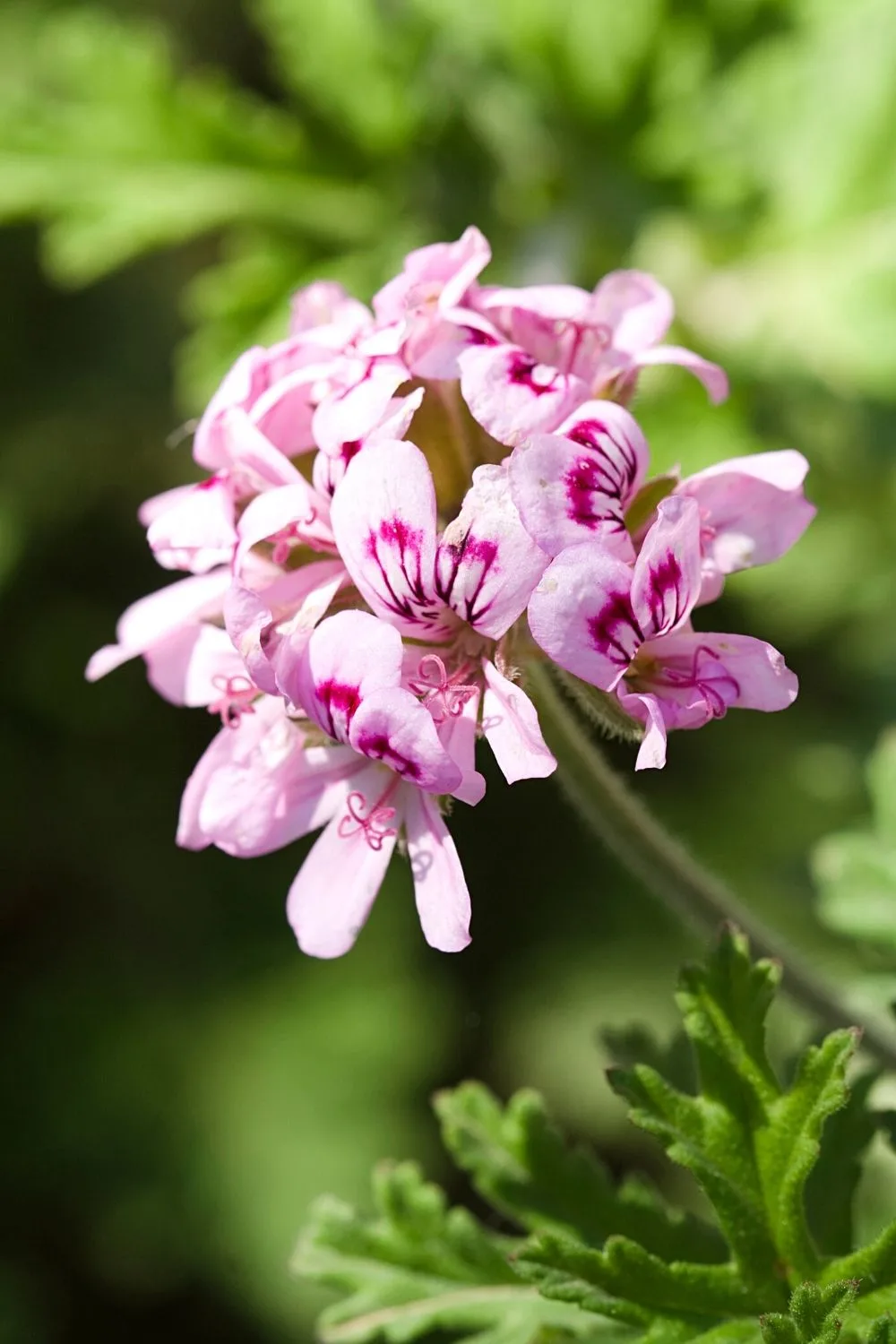
Geraniums thrive in the west-facing side of the house due to the shade it provides
Another bright, lively plant in your west-facing garden can be the Geranium. This hardy plant tolerates sun as well as shade and comes in a variety of colors, including tones of pink, white, blue, and purple.
Plant it in well-draining soils, preferably with perlite or peat moss for optimal growth.
- Scientific name:
- Light requirements: moderate to high
- Watering requirements: low to moderate
- Growth rate: moderate
- pH: 5.6 to 7.8
- Care: low to moderate
12. Ceanothus
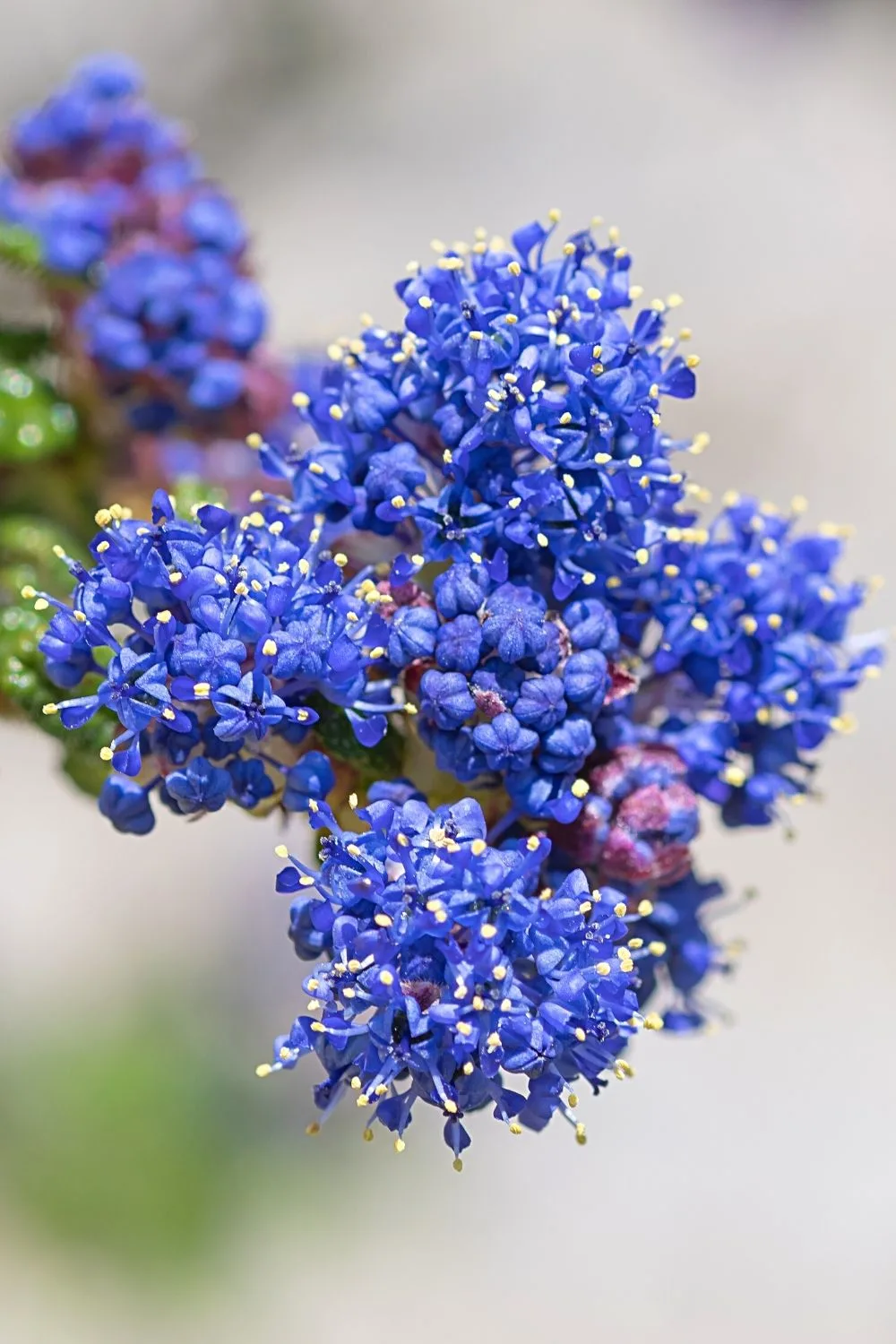
The west-facing side of the house is where you should plant your Ceanothus as it can shield the plant from cold, direct winds
Another great choice for west-facing gardens is Ceanothus. It does really well behind west-facing walls as they protect the Ceanothus plant from cold, direct winds.
Catching the eye of observers, it gives rise to unique blue flowers. Alternatively, it is known as Soapbush and Backbrush.
- Scientific name: Ceanothus
- Light requirements: moderate to high
- Watering requirements: low to moderate
- Growth rate: moderate
- Temperature: over 15 degrees Fahrenheit
- pH: 6.5 to 8
- Care: low to moderate
13. Solomon’s Seal
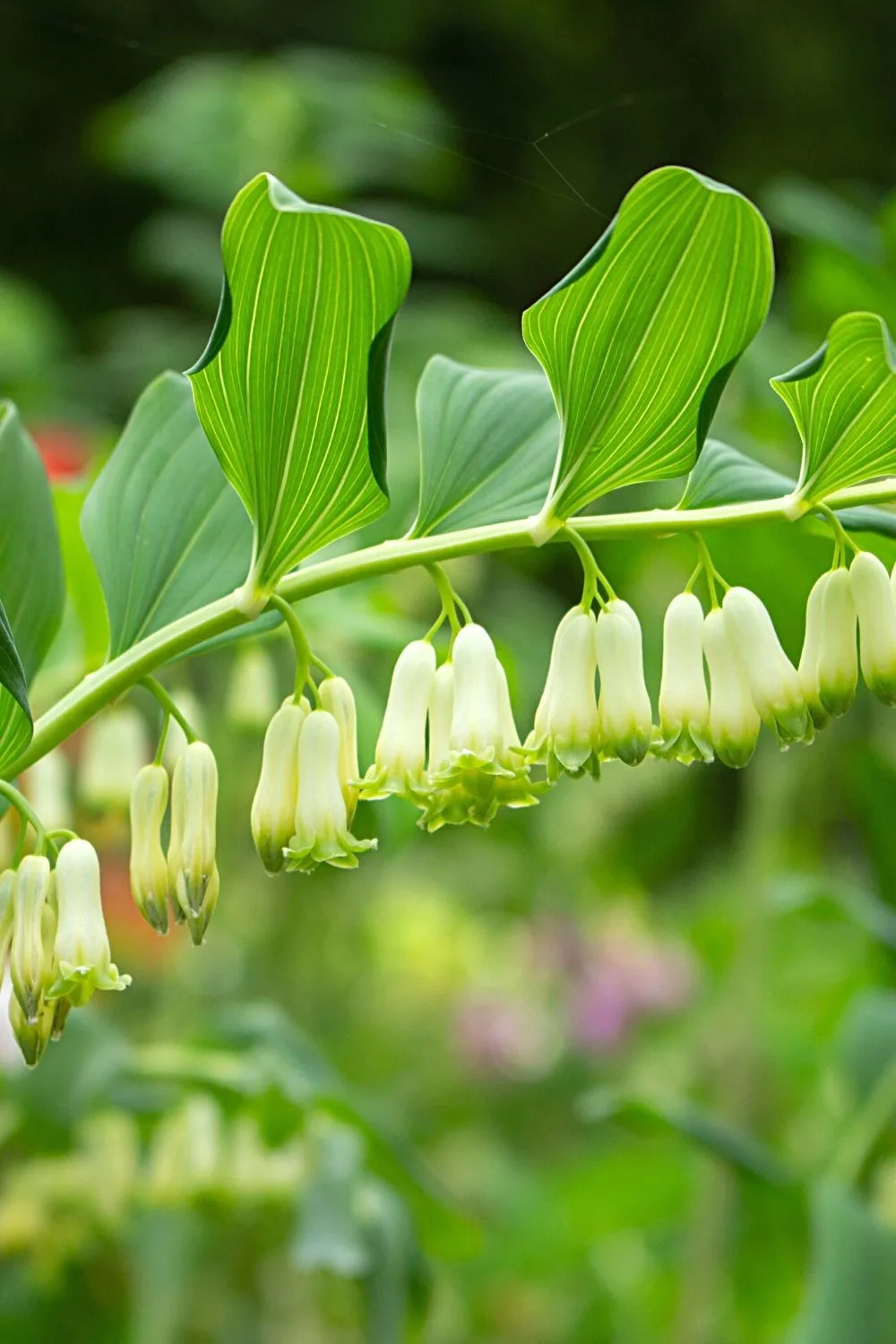
Solomon’s seal loves the shade in the mornings and sunlight during the day of the west-facing side of the house
This plant is a mix of Hybridum and Polygonatum. The Solomon’s seal is a great choice for west-facing gardens with shade in the morning and sunlight during the day.
It is a shrub that offers long, arching stems that give rise to fern-like leaves.
In the early summers, the plant produces lovely white, bell-shaped blowers that have green tips. The Solomon’s seal is pretty easy to grow, giving little to no trouble to the gardener.
- Scientific name: Polygonatum
- Light requirements: moderate to high
- Watering requirements: low to moderate
- Growth rate: moderate
- Temperature: over -20 degrees Fahrenheit
- pH: 5 to 7
- Care: low to moderate
14. Leucanthemum x Superbum
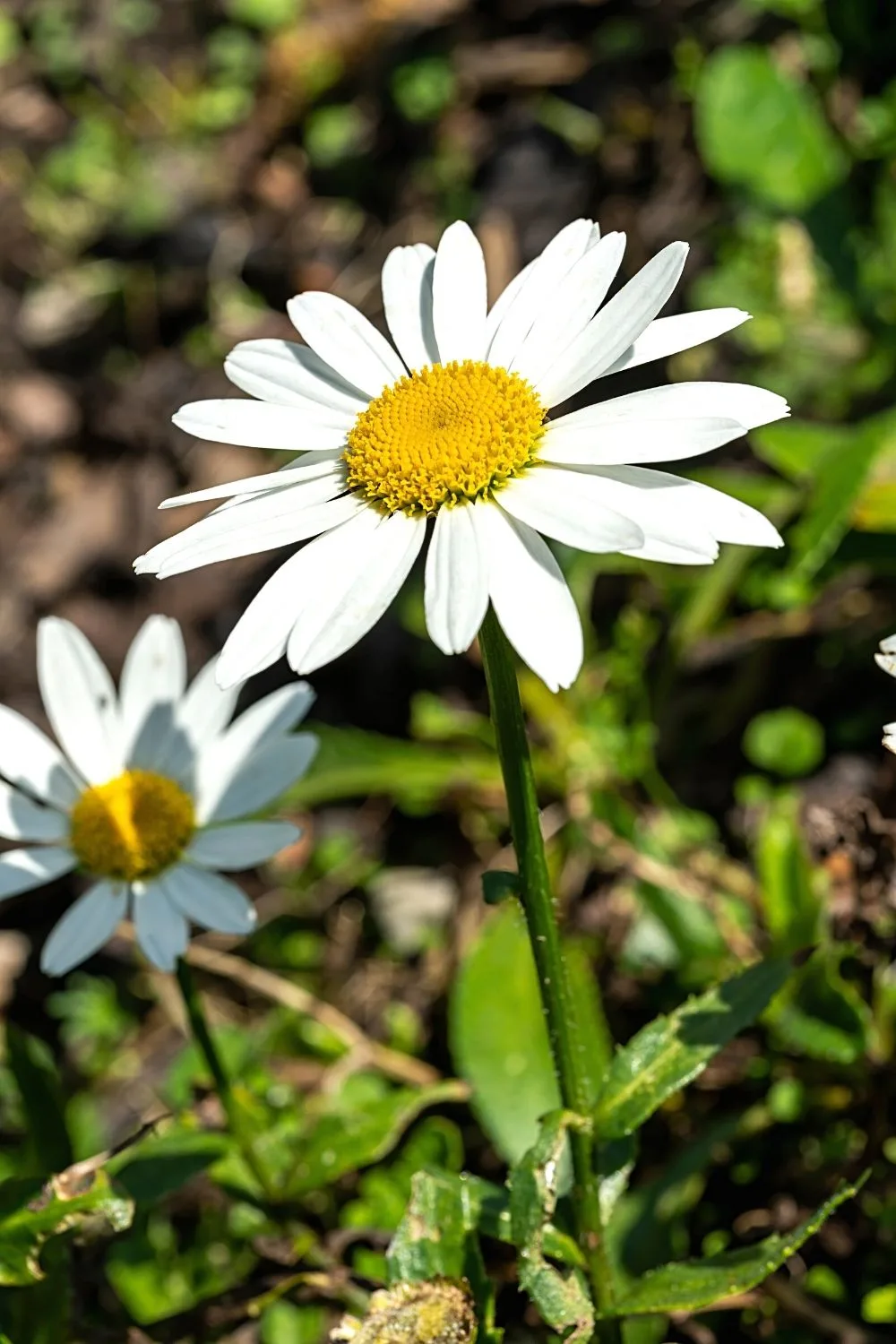
Leucanthemum x superbum, aka the Snowcap Shasta Daisy, is another great addition to the west-facing side of the house plant collection
This plant is a unique mix of Leucanthemum and superbum and is called Snowcap Shasta Daisy. It’s a fresh and fun plant requiring partial shade and sun in the morning and afternoon, respectively.
It is also known as Alaska Shasta Daisy due to its large white flowers that have gorgeous yellow centers.
- Scientific name: Snowcap Shasta Daisy
- Light requirements: moderate to high
- Watering requirements: low to moderate
- Growth rate: moderate
- Temperature: unknown
- pH: 6 to 8
- Care: low to moderate
15. Alchemilla Mollis
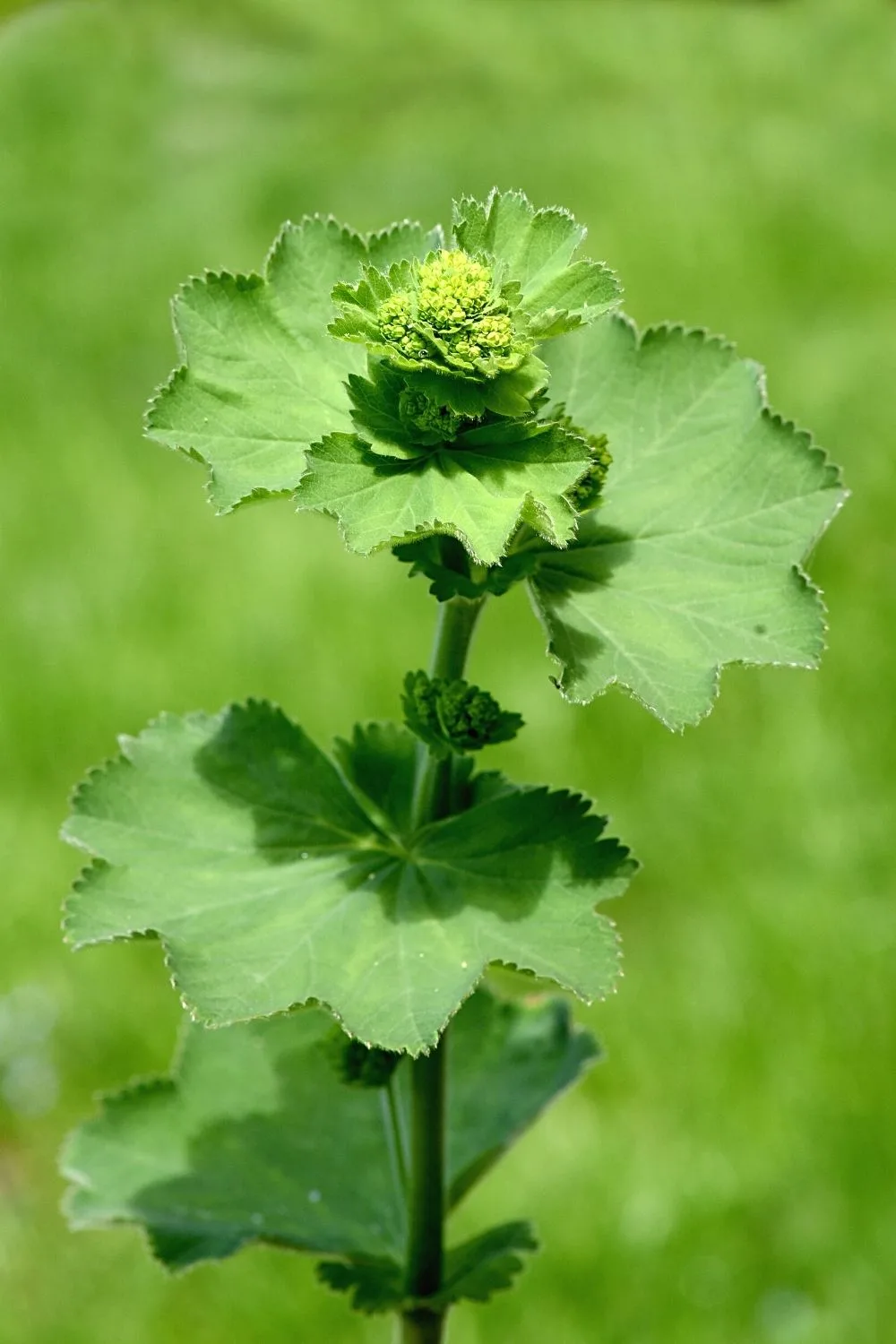
Alchemilla Mollis, aka Lady Mantle, is another great plant that will thrive when grown in the west-facing side of the house
The Achemilla mollis, commonly known as lady’s mantle is a classic plant for growing in west-facing gardens. This is an aesthetic plant that loves the partial sun and half shade.
It is a low bush with pretty gray-green scalloped foliage and yellow-green blooms.
The plant enjoys moderate sunlight, as in west-facing gardens. It is low maintenance and likes fertile, light soils.
They look wonderful in the morning, covered with dew, and also work great as ground cover.
- Scientific name: Achemilla mollis
- Light requirements: moderate to high
- Watering requirements: low to moderate
- Growth rate: moderate
- Temperature: unknown
- pH: 5.5 to 7.5
- Care: low to moderate
16. Coneflower
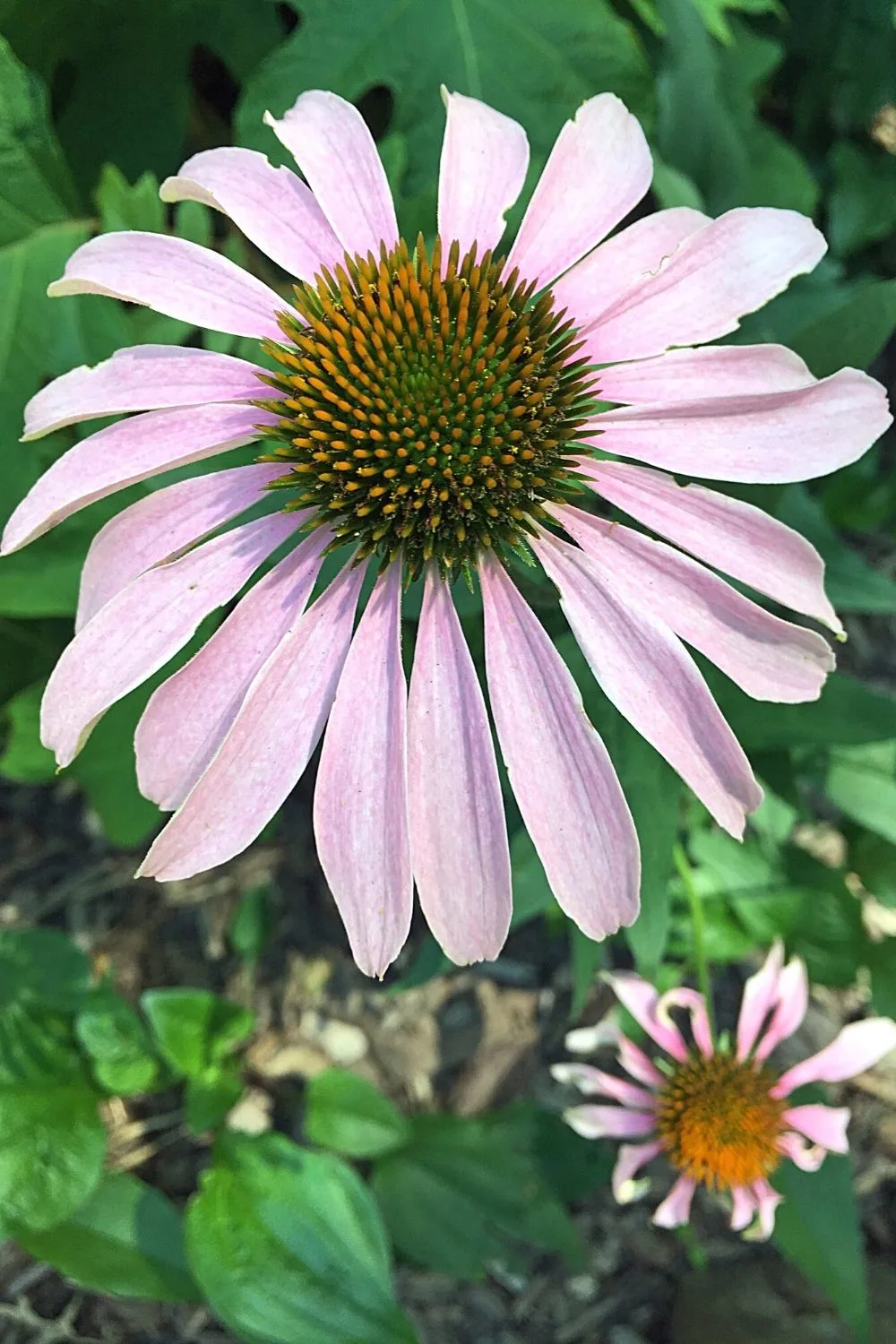
Coneflower is another partial-to-full-sun loving plant that will thrive in a west-facing side of the house
This plant is one of the easiest to grow on this list. Coneflower thrives in partial to full sun, requiring approximately six to eight hours of sunlight.
It does well in fertile soils but also manages in poor soils. This beauty also attracts deer and pollinators, so get ready for some activity in your garden.
The coneflower needs little water to survive, so even occasional rain works for it. However, do fertilize it for optimal growth.
- Scientific name: Echinacea
- Light requirements: moderate to high
- Watering requirements: low to moderate
- Growth rate: moderate
- Temperature: 70 to 75 degrees Fahrenheit
- pH: 6 to 7
- Care: low to moderate
17. Creeping Thyme
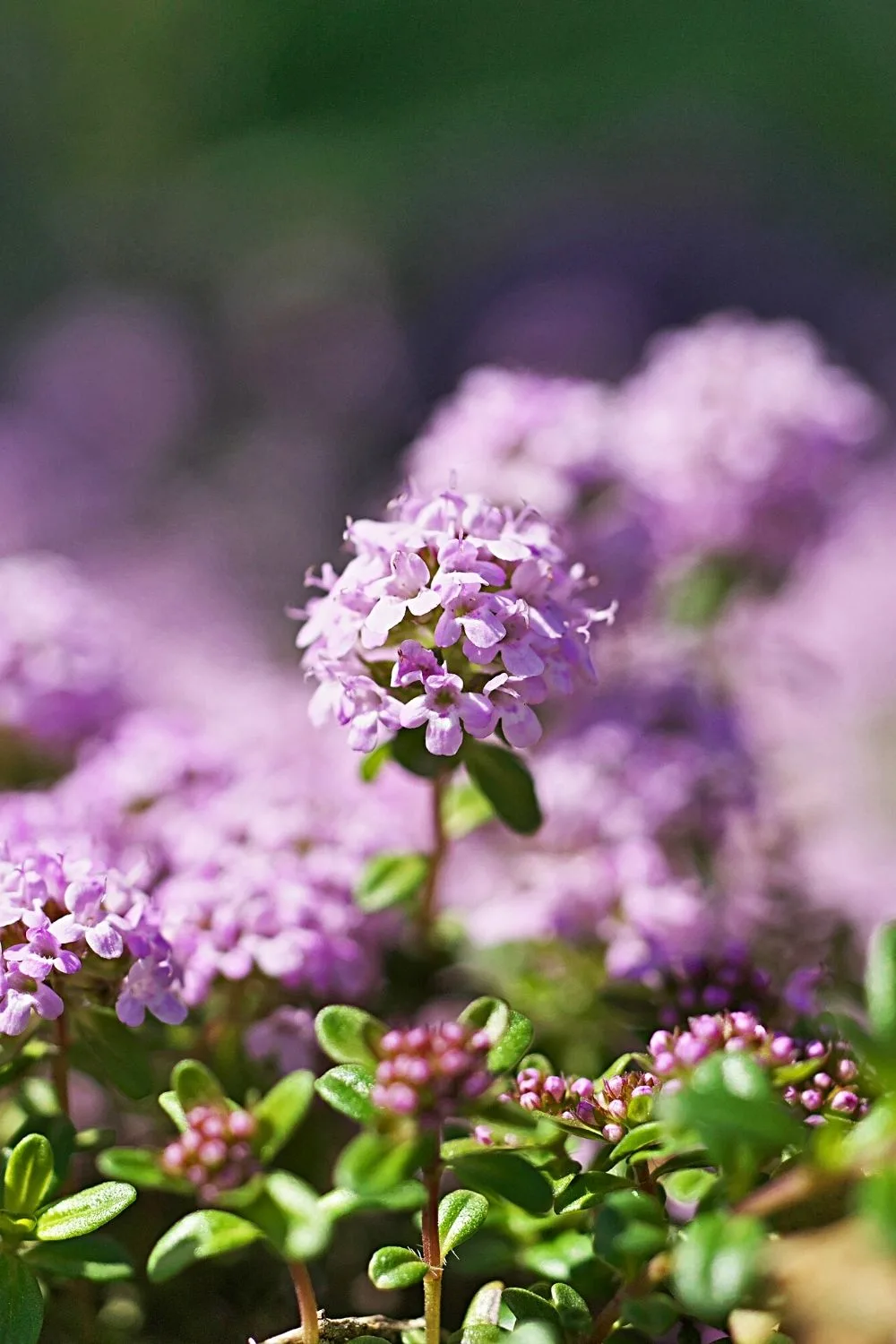
Creeping Thyme is an excellent ground cover for the west-facing side of the house garden you’re growing
Creeping thyme is a favorite of gardeners who enjoy cooking. It is a perennial plant that makes a great ground cover.
This is fragrant, edible, and drought-resistant. However, it does not do well in the cold.
In the frost season, cover the thyme plant with a tarp until the temperatures rise again.
- Scientific name: Thymus vulgaris
- Light requirements: moderate to high
- Watering requirements: low to moderate
- Growth rate: moderate
- Temperature: 68 to 86 degrees Fahrenheit
- pH: 6 to 7
- Care: low to moderate
18. Texas Ranger
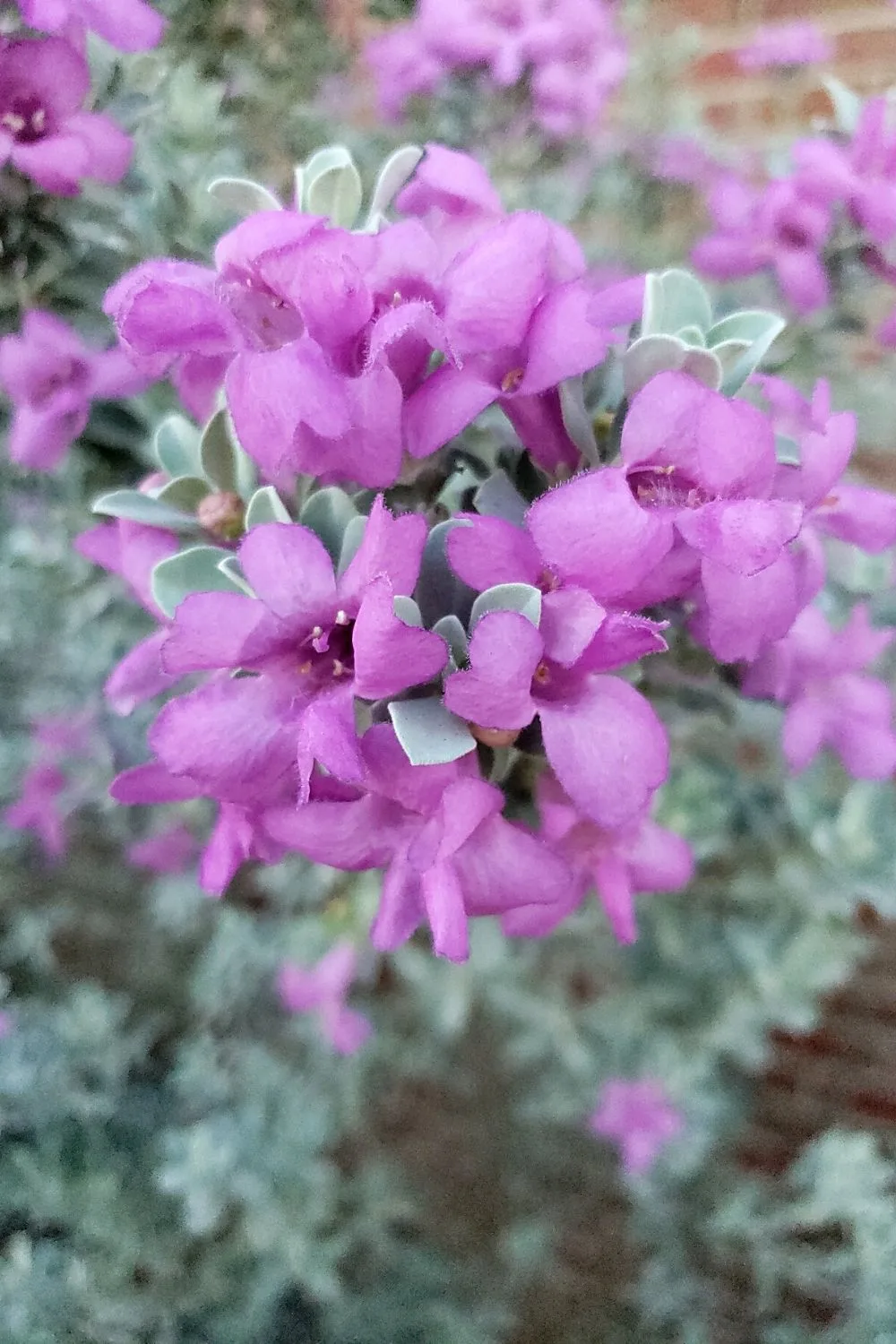
The stunning, colorful blooms of the Texas Ranger is a great way of sprucing up the west-facing side of the house
A plant that thrives in west-facing gardens is Texas Ranger. It has stunning vibrant purple, lavender, and magenta blooms.
It adds a lovely tropical touch to gardens and looks wonderful as a focal plant.
Texas ranger, also called wild lilac, thoroughly enjoys bright, dappled sunlight in the day and shade in the morning.
This flowering shrub is low maintenance and rarely causes trouble. Water this beauty only during the summers or in droughts.
- Scientific name: Leucophyllum frutescens
- Light requirements: moderate to high
- Watering requirements: low to moderate
- Growth rate: moderate
- Temperature: over 10 degrees Fahrenheit
- pH: 8.6 to 9
- Care: low to moderate
19. American Beautyberry
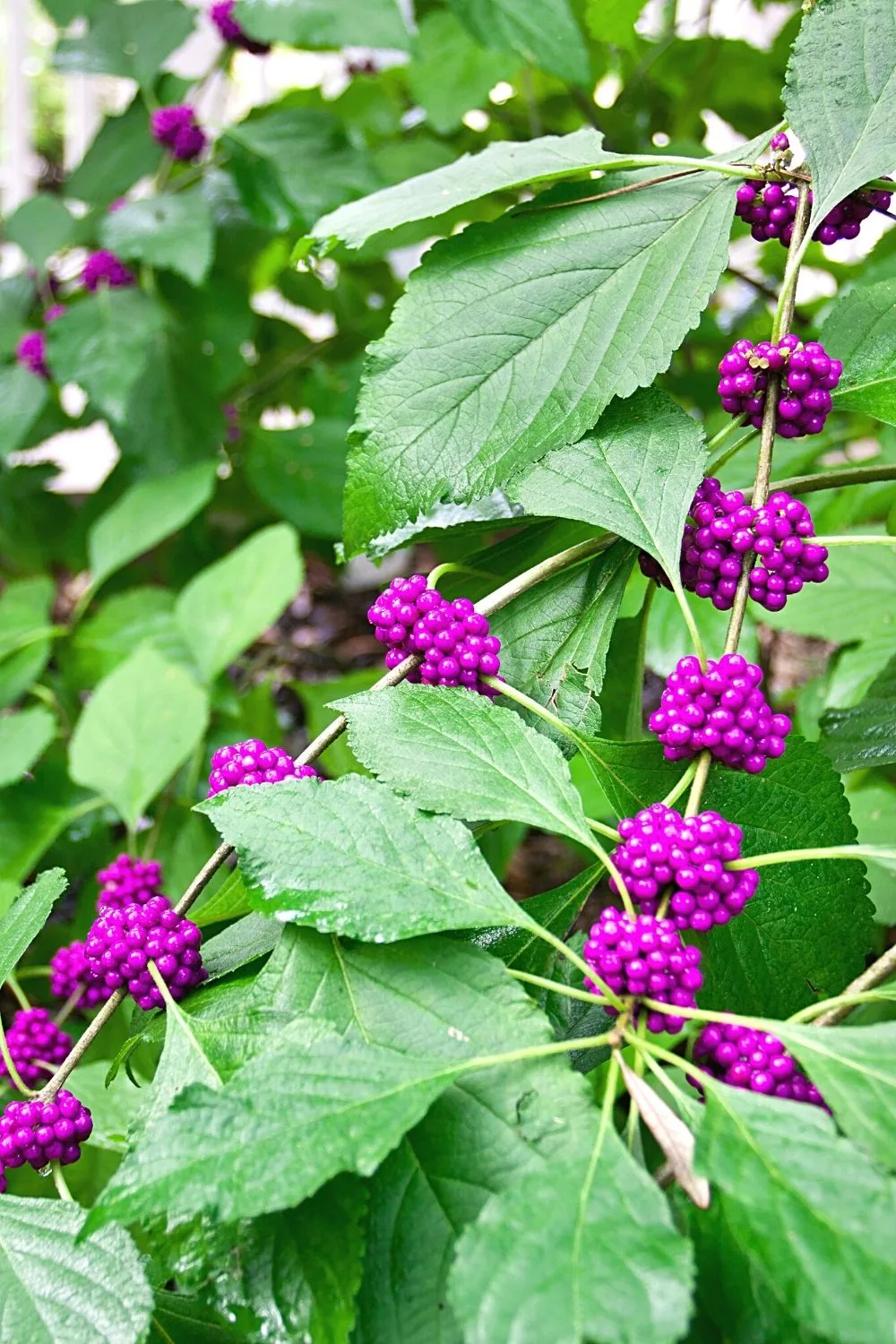
If you’re looking for a low-maintenance shrub that you can grow on the west-facing side of the house, then plant the American Beautyberry
Another great choice for west-facing gardens is American beautyberry. It is a low-maintenance shrub with year-long color.
The flowers are lilac and bloom profusely in summer and spring.
The leaves, however, fall off in fall and winter to reveal purple berries. The berries are a snack for birds and insects.
Furthermore, the plant is a disease, pest, and drought-resistant.
- Scientific name: Callicarpa americana
- Light requirements: moderate to high
- Watering requirements: low to moderate
- Growth rate: moderate
- Temperature: unknown
- pH: 4.8 to 7
- Care: low to moderate
20. Hosta
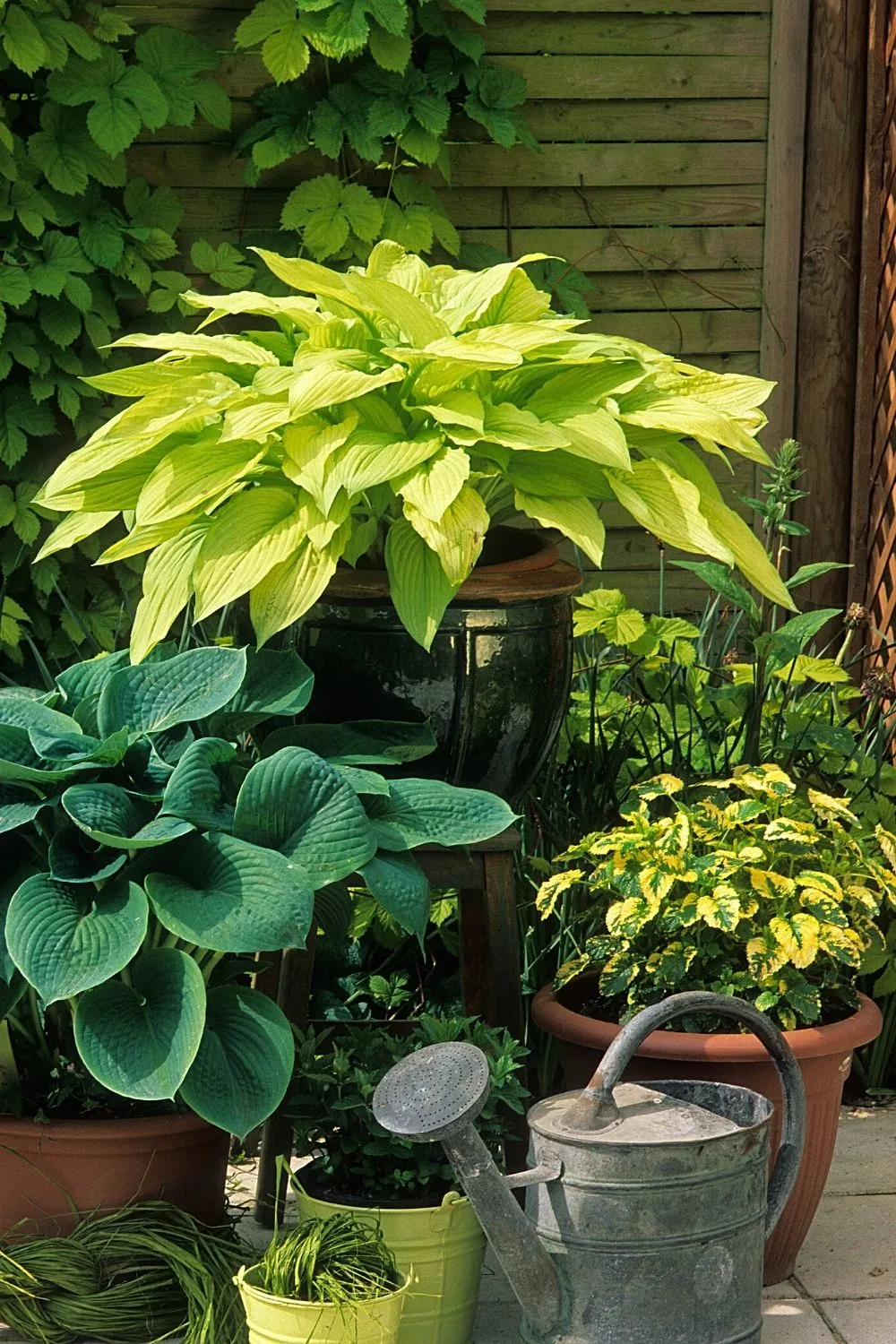
Hosta loves the partial shade that the west-facing side of the house can provide
This simple plant can survive almost anywhere; however, the west-facing gardens with the partial sun are its favorite.
It is a leafy plant that grows best through USDA zones 2 to 10. It works great as a groundcover.
Water it every morning to prevent its leaves from dehydration and scorching.
The Hosta’s foliage is variegated and green to gold and forms a wonderful landscape addition when fully mature.
- Scientific name: Hosta
- Light requirements: moderate to high
- Watering requirements: low to moderate
- Growth rate: moderate
- Temperature: 33 to 41 degrees Fahrenheit
- pH: 6.5 to 7.5
- Care: low to moderate
21. Meadow Sage
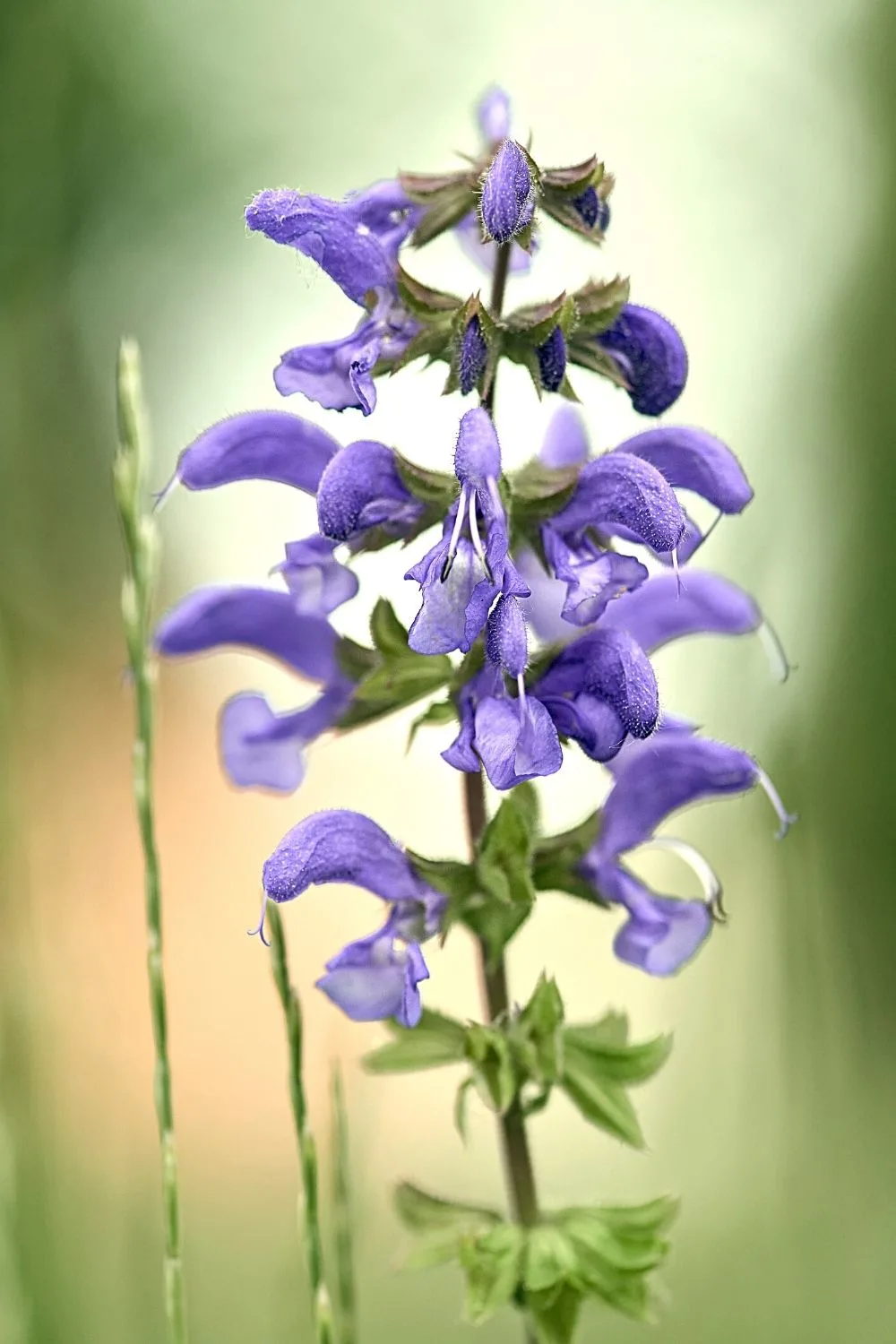
If you want to attract hummingbirds and bees to the west-facing side of the house, plant Meadow sage
This beauty will add color to your garden like no other. Apart from gardeners, hummingbirds and bees also enjoy this plant.
Its long stalks with bright lilac and purple blooms form a beautiful sight.
Additionally, this perennial handles full to moderate sunlight and occasional watering.
- Scientific name: Salvia pratensis
- Light requirements: moderate to high
- Watering requirements: low to moderate
- Growth rate: moderate
- Temperature: unknown
- pH: 6.1 to 7.3
- Care: low to moderate
22. Peppermint
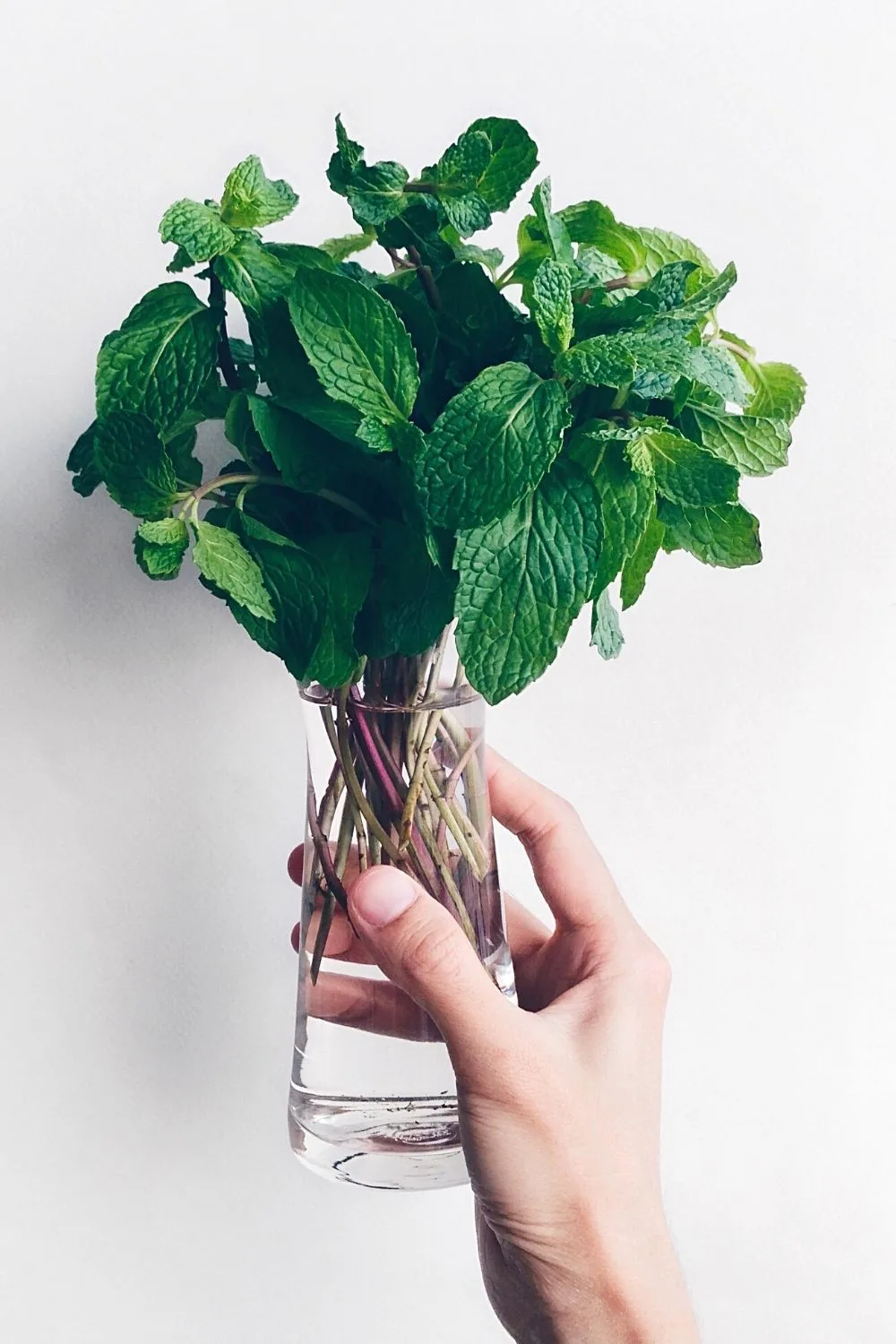
Peppermint is an aromatic herb that will thrive in the west-facing side of the house
An aromatic plant that does well in west-facing gardens is peppermint. The plant is also a good mosquito repellent and tastes well in mojitos.
It is an easy maintenance plant requiring a little more effort than the rest; the invasive roots grow fast that can overtake gardens.
Grow it slightly away from other plants, so there is an equal nutrition distribution.
- Scientific name: Mentha x Piperita
- Light requirements: moderate to high
- Watering requirements: low to moderate
- Growth rate: moderate
- Temperature: over 85 degrees Fahrenheit
- pH: 5.5 to 6
- Care: low to moderate
23. Rudbeckia
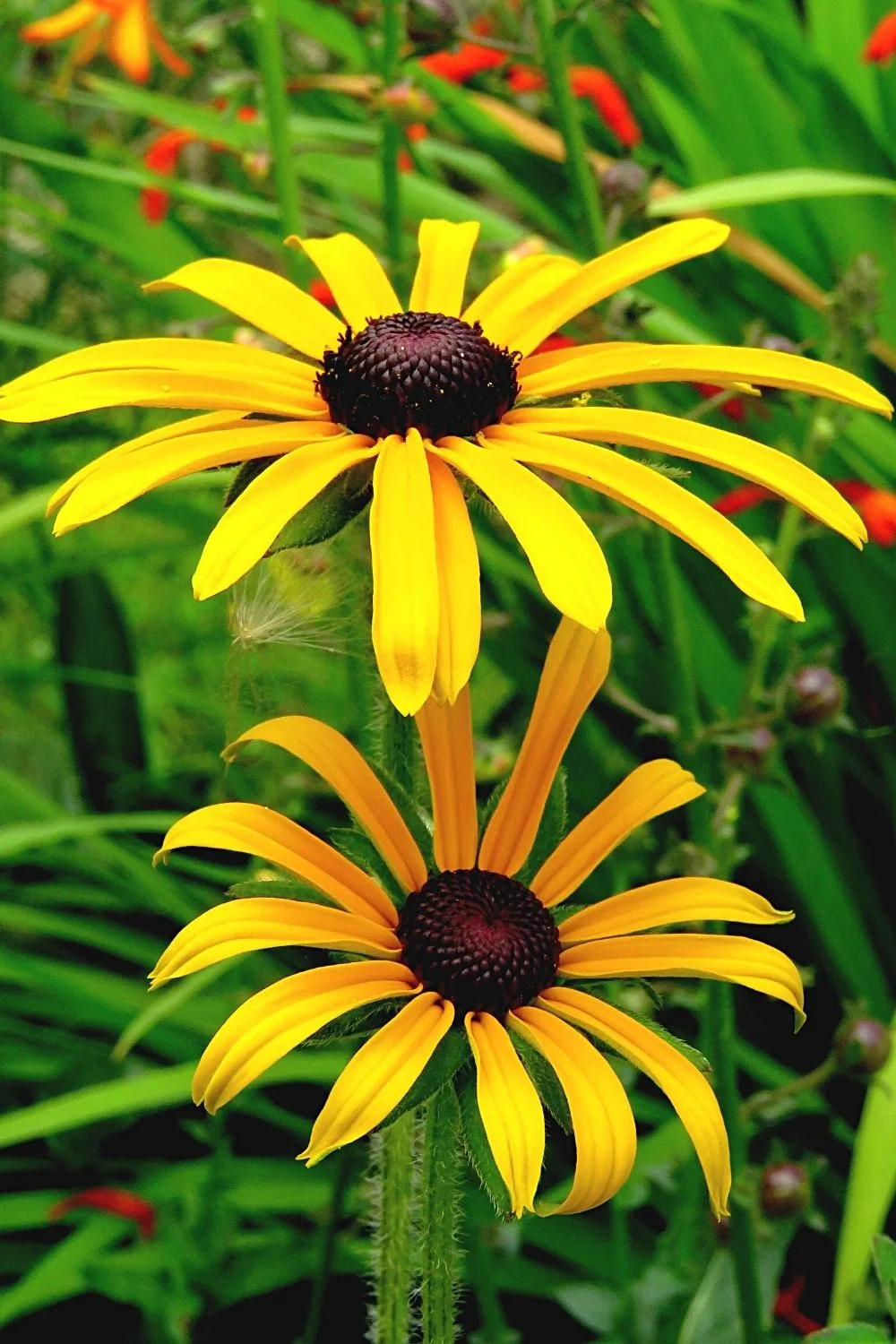
Rudbeckia is disease and drought resistant plant that you can grow on the west-facing side of the house
Rudbeckia, alternatively known as Black-eyed Susan, is another great option for west-facing gardens. It is a disease and drought-resistant plant with large yellow blooms and brown or purple centers.
They also attract butterflies and insects due to their vibrant color.
Rudbeckia has a similar effect on wildlife; it attracts rabbits and deer, so place them next to repellents like rosemary and lavender.
- Scientific name: Rudbeckia
- Light requirements: moderate to high
- Watering requirements: low to moderate
- Growth rate: moderate
- Temperature: over – 30 degrees Fahrenheit
- pH: 5.5 to 6
- Care: low to moderate
24. Dusty Miller
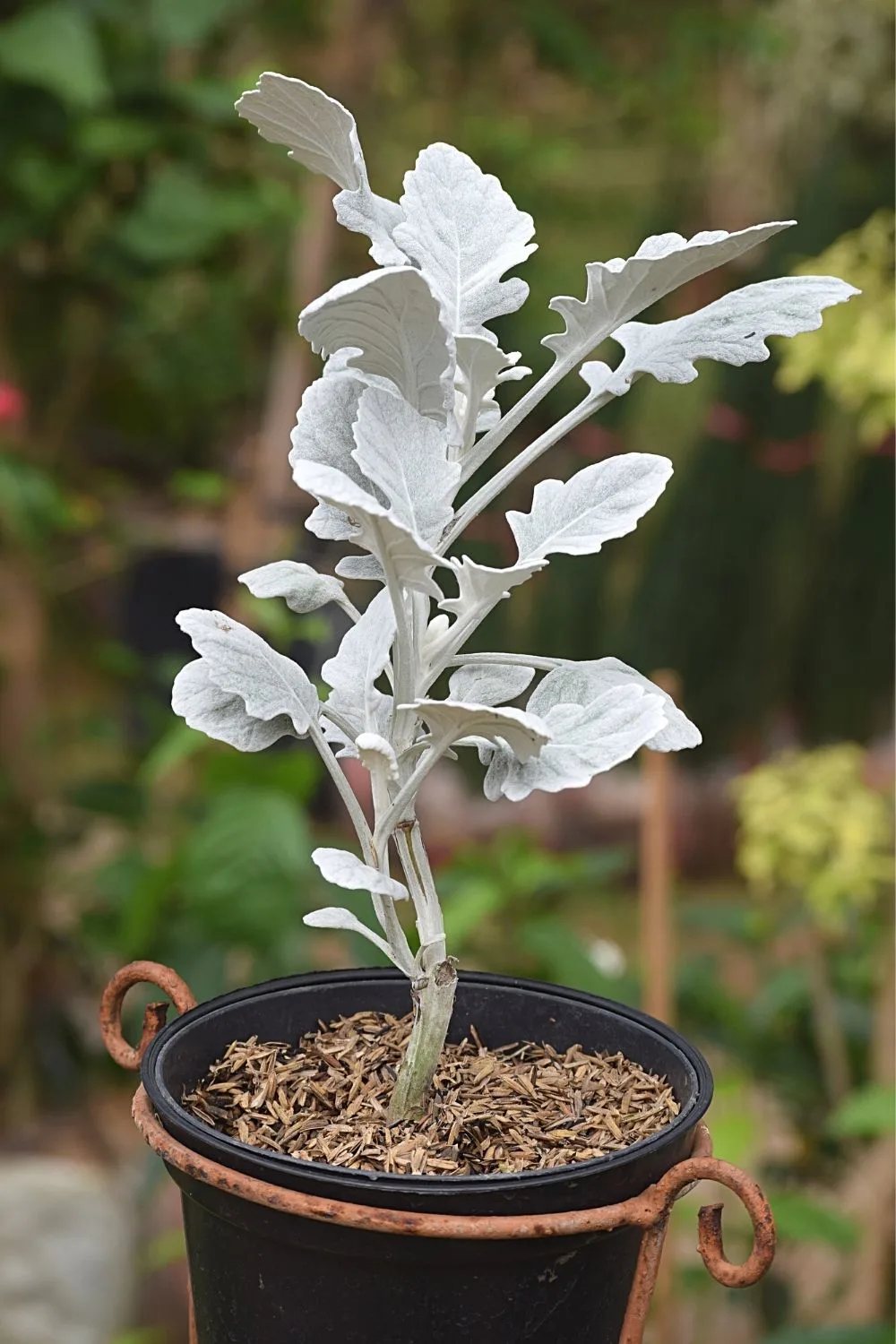
The Dusty miller’s gray lacy foliage is sure to wow anyone who passes by the west-facing side of your house
This one makes a striking appearance in any garden. It has silver to gray lacy foliage contrasting with green stems.
The plant is fairly easy to manage and likes dappled sunlight during the day and partial shade in the morning. West-facing gardens are its favorite due to the ideal light settings.
Once the Dusty Miller’s established, it tolerates both drought and heat.
- Scientific name: Jacobaea maritima
- Light requirements: moderate to high
- Watering requirements: low to moderate
- Growth rate: moderate
- Temperature: 40 to 60 degrees Fahrenheit
- pH: 5.5 to 6
- Care: low to moderate
25. Lamb’s Ear
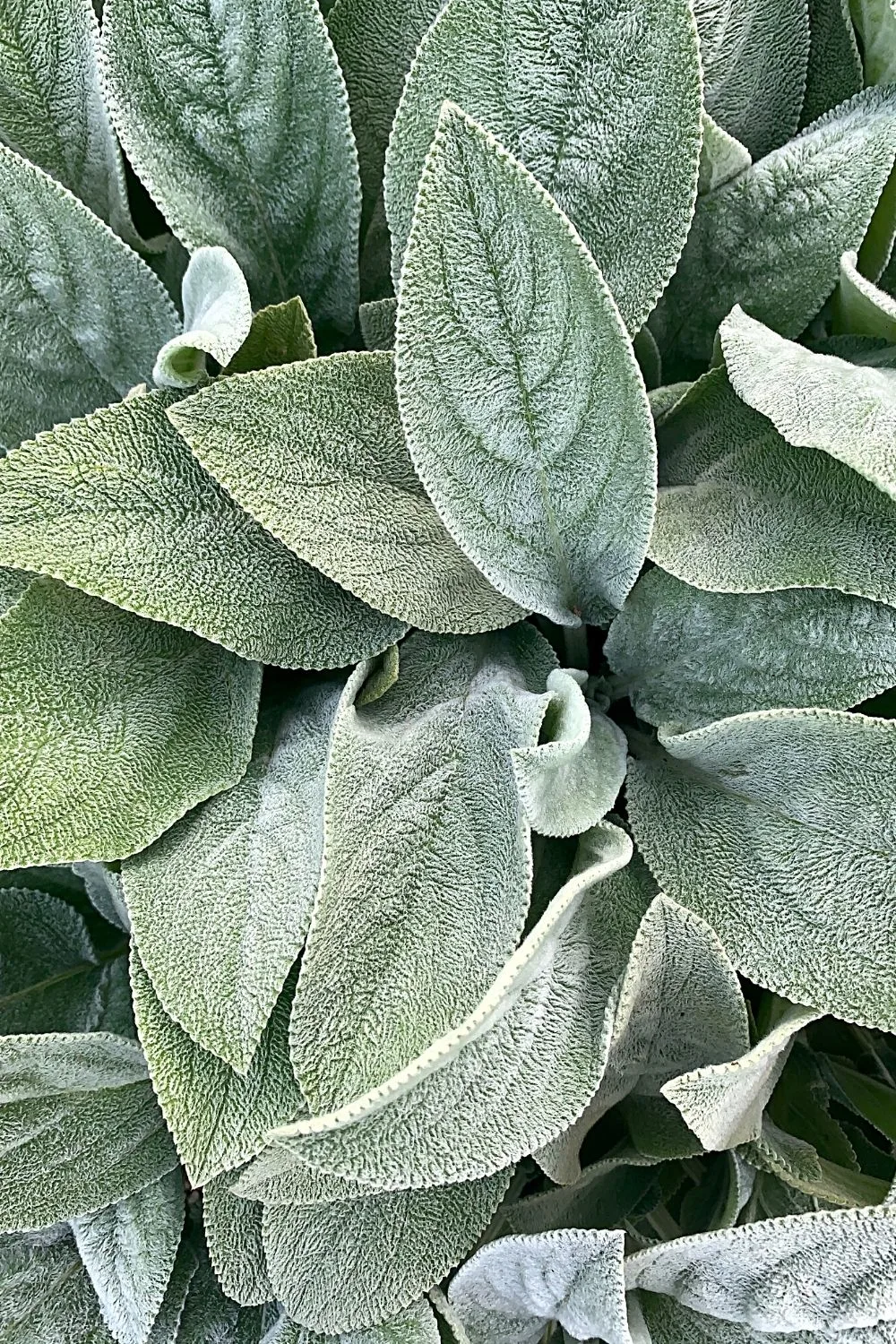
Lamb’s ear, known for its soft and fuzzy foliage, is another great addition to the west-facing side of the house garden
Lamb’s ear has interesting foliage that appears soft and fuzzy, hence the name. The perennial is low-growing and with good drought and heat resistance.
For optimal growth, grow it in well-draining soils in partially lit areas.
- Scientific name: Stachys byzantina
- Light requirements: moderate to high
- Watering requirements: low to moderate
- Growth rate: moderate
- Temperature: unknown
- pH: 6 to 6.5
- Care: low to moderate
26. Arkansas Blue Star
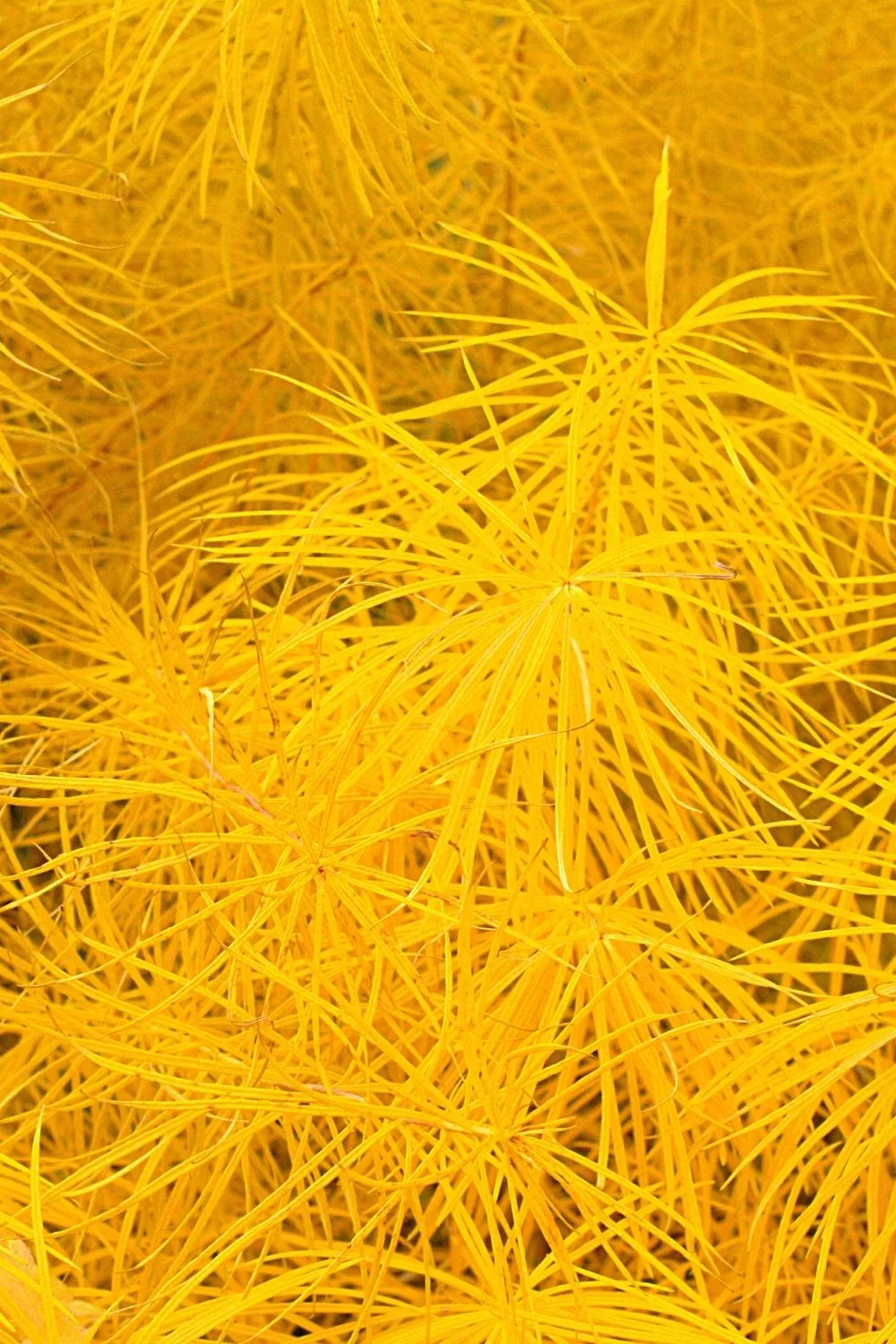
Arkansas blue star’s star-shaped blooms is another stunning addition to the west-facing side of the house
A unique feathery plant you can grow in your west-facing garden is the Arkansas Blue star. It has star-shaped flowers in spring and feathery needle-like foliage in the summers.
It is deer and drought resistant. It is often combined with other grasses to be grown as a border plant.
- Scientific name: Amsonia Hubrichtii
- Light requirements: moderate to high
- Watering requirements: low to moderate
- Growth rate: moderate
- Temperature: unknown
- pH: 5.6 to 7.8
- Care: low to moderate
27. Catmint
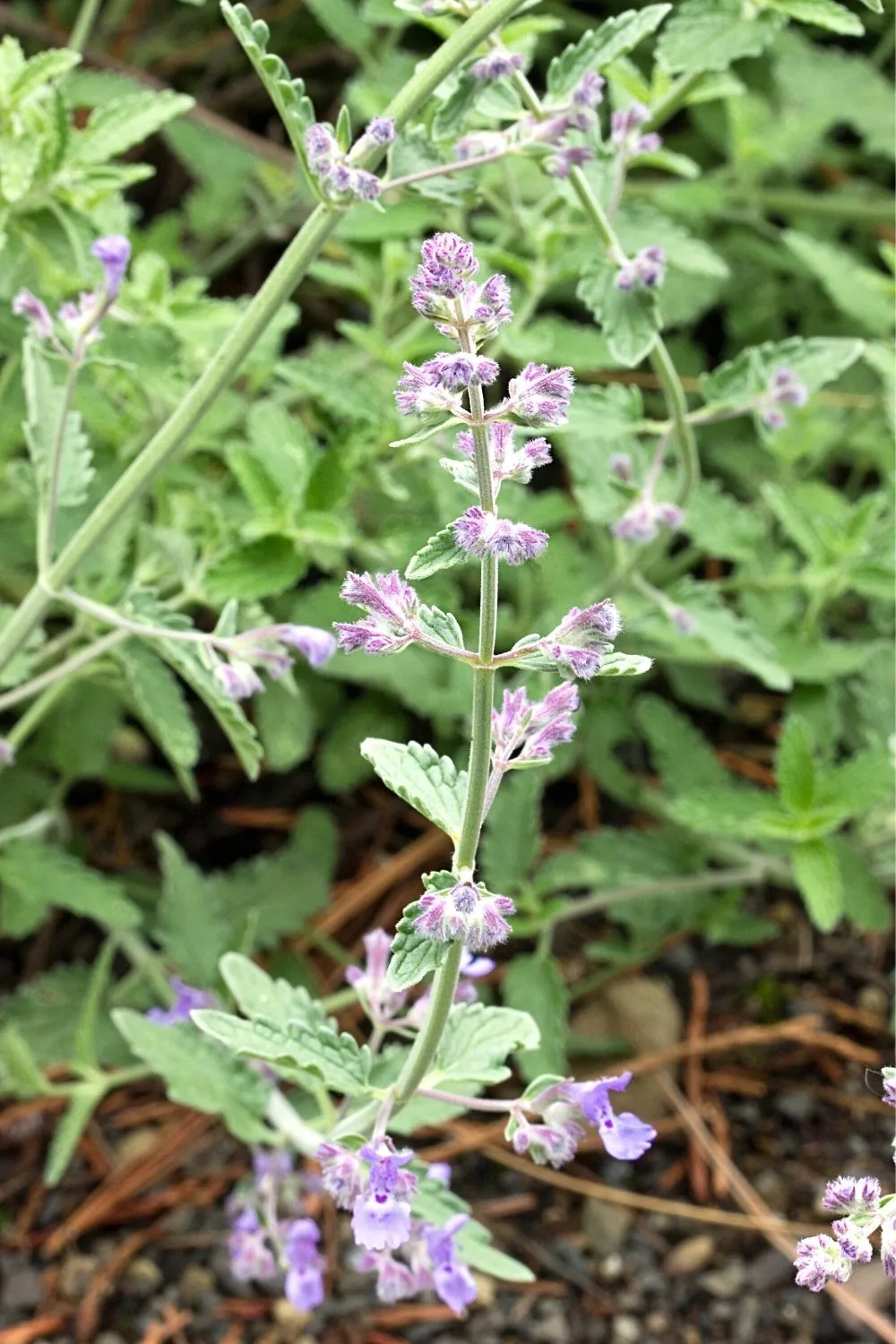
Catmint is an inedible variety of mint that will thrive in a west-facing side of the house garden
An inedible mint variety is the catmint. It is a beautiful perennial with purple-blue blooms and green-gray foliage.
Often blooming in early spring, it reaches a height of about four feet.
Gardeners tend to plant this aromatic herb in rock gardens as it’s easy to grow, heat tolerant, and deer and rabbit resistant.
However, it does attract cats. Prune the flowers for them to regrow in the summers.
- Scientific name: Nepeta
- Light requirements: moderate to high
- Watering requirements: low to moderate
- Growth rate: moderate
- Temperature: 55 to 85 degrees Fahrenheit
- pH: 5 to 8
- Care: low to moderate
28. Clematis
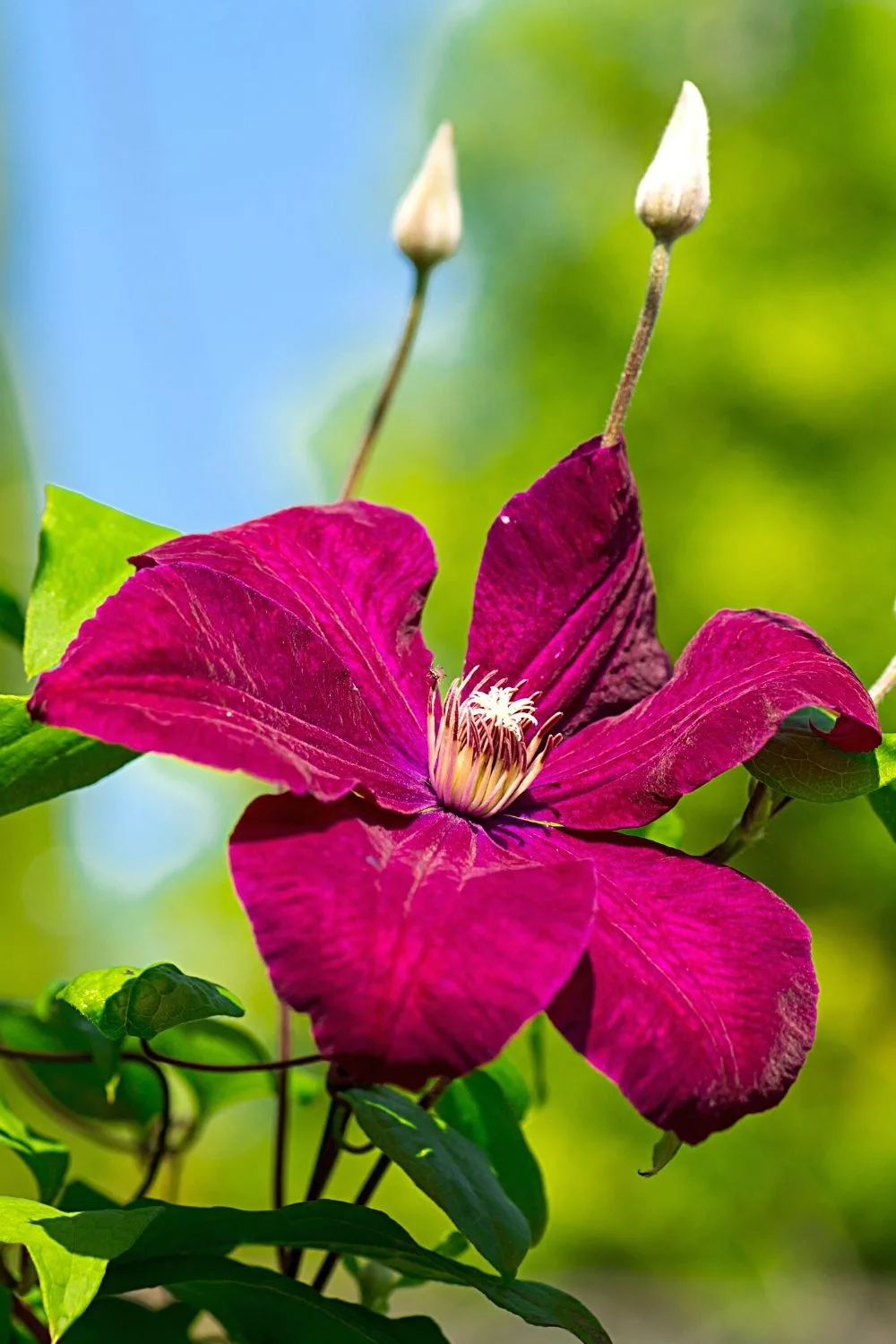
Clematis is a fast-growing and climbing plant that you can grow on the west-facing side of the house
An American classic is the Clematis. It isn’t only a fast grower but also a climber that often covers outdoor structures, providing shade and privacy.
The size and color differ by variety; some are large with violet flowers, while others give rise to small white blooms.
However, all varieties bloom in spring. Plant it in moist and cool soils for the best results.
- Scientific name: Clematis
- Light requirements: moderate to high
- Watering requirements: low to moderate
- Growth rate: moderate
- Temperature: over 45 degrees Fahrenheit
- pH: 6.5 to 7
- Care: low to moderate
29. Coral Honeysuckle
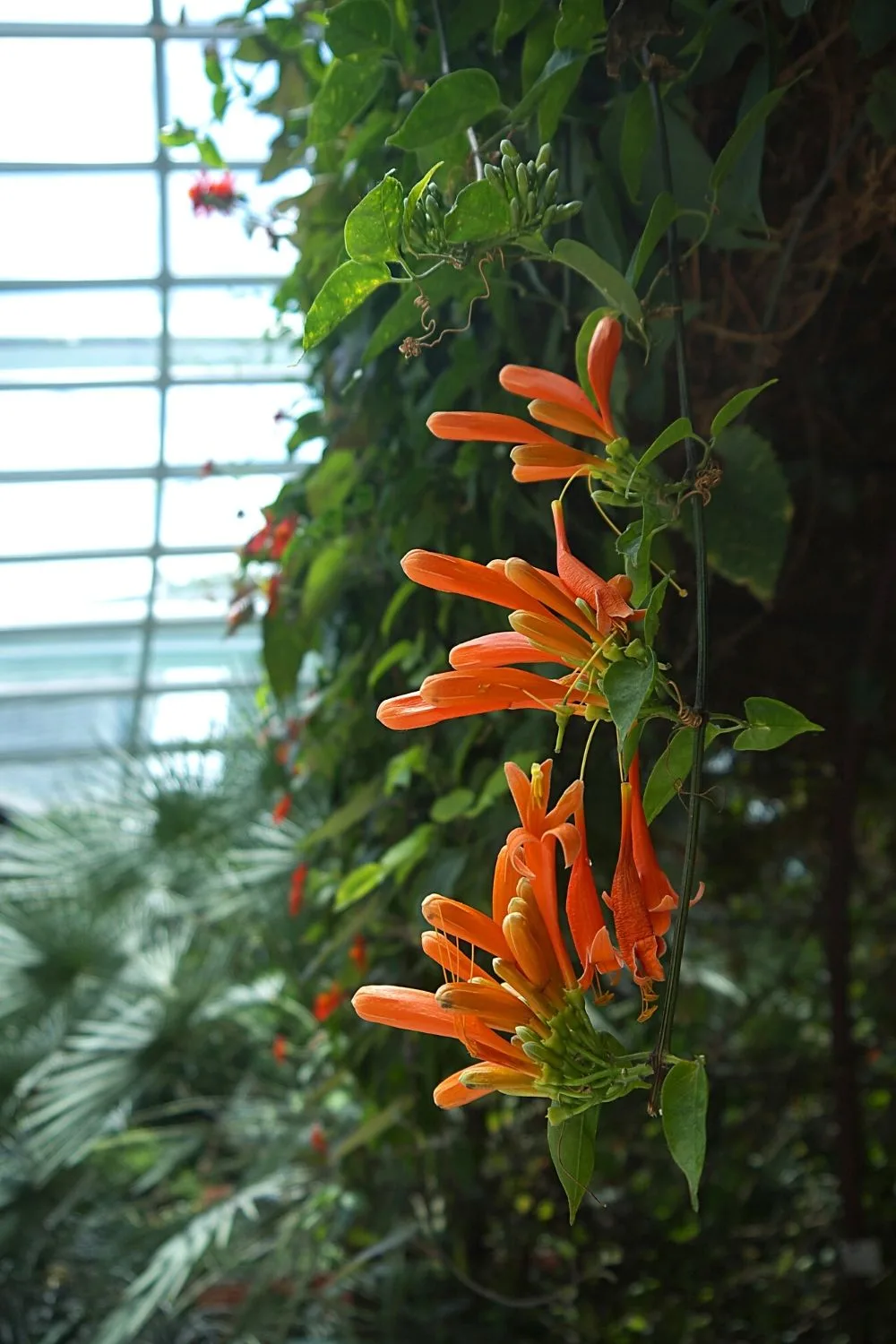
Coral honeysuckle’s brightly-colored trumpet-shaped blooms looks great when grown on the west-facing side of the house
This beauty is a native of Virginia. It sprouts naturally throughout the United States, starting from the northern areas of Maine and all the way to the west in Illinois.
Despite its fancy looks of trumpet-shaped blooms and bright-red berries, it doesn’t require a lot of attention.
However, it does attract hummingbirds and butterflies.
Grow it where there’s plenty of sun in the daytime and partial shade during the morning. Moreover, train it with narrow supports if you want to grow it as a climber.
- Scientific name: Lonicera sempervirens
- Light requirements: moderate to high
- Watering requirements: low to moderate
- Growth rate: moderate
- Temperature: unknown
- pH: 5.6 to 7.8
- Care: low to moderate
30. Butterfly Bush
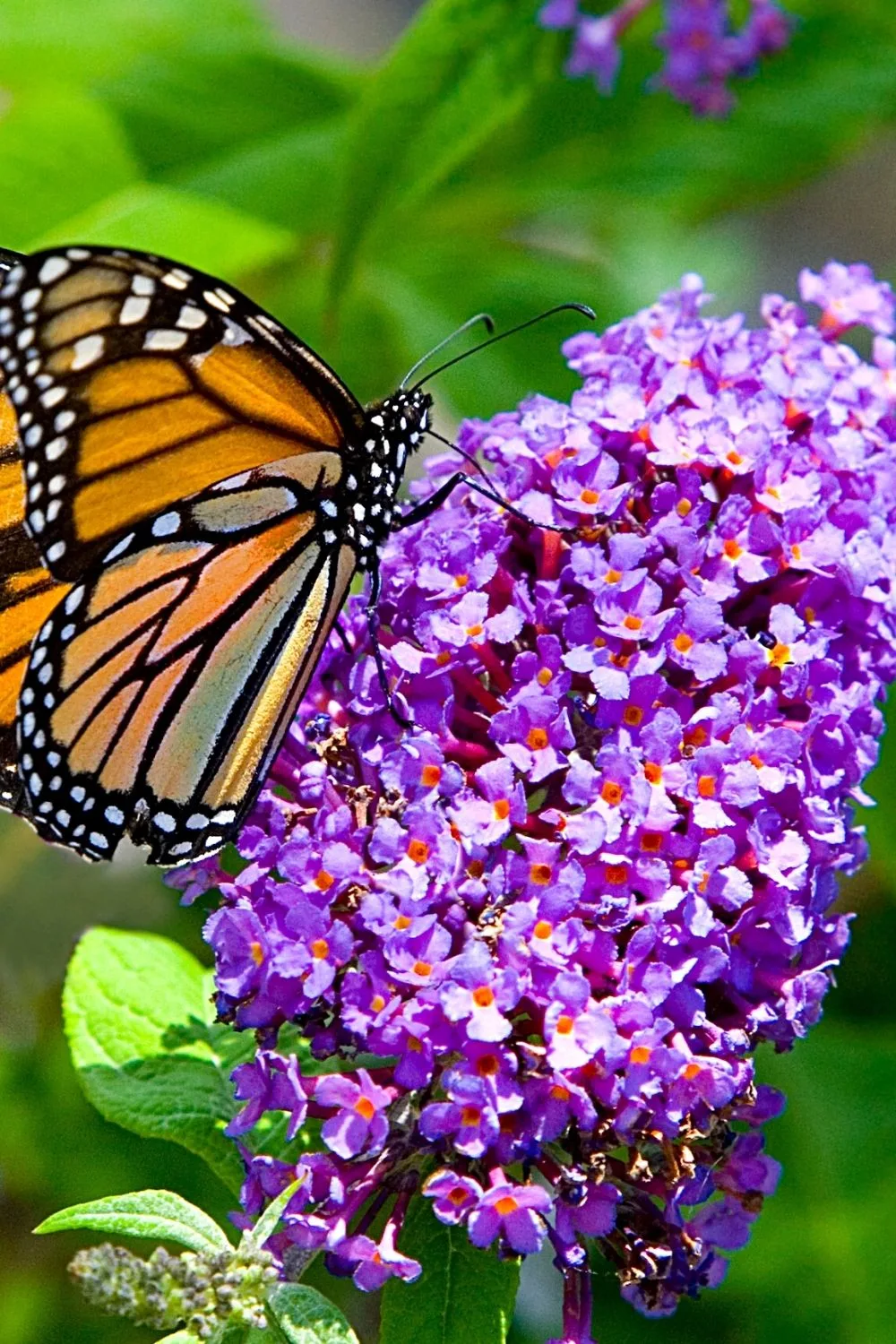
Butterfly bush, despite its stunning look, is a highly-invasive plant that thrives in the west-facing side of the house
The Butterfly bush is a tough shrub that grows exceptionally well in west-facing gardens. It has beautiful trusses of white, pink, or purple blooms that never fail to attract.
Though it looks lovely, the Butterfly bush is highly invasive. It’ll even grow into your neighbor’s garden.
Therefore, remember to trim it often or buy a non-invasive variety preferably.
- Scientific name: Buddleja
- Light requirements: moderate to high
- Watering requirements: low to moderate
- Growth rate: moderate
- Temperature: 90 degrees Fahrenheit
- pH: 6 to 7
- Care: low to moderate
Related: Best Plants for Privacy
The west-facing side of the house offers great possibilities for plants as the sun goes down in the west. The afternoon sun is great for many plants. I hope with the list of the best plants for the west-facing side of the house, I can help you find your favorites.

Daniel has been a plant enthusiast for over 20 years. He owns hundreds of houseplants and prepares for the chili growing seasons yearly with great anticipation. His favorite plants are plant species in the Araceae family, such as Monstera, Philodendron, and Anthurium. He also loves gardening and is growing hot peppers, tomatoes, and many more vegetables.

![30 Plants for West-Facing Side of House — Best Guide [2024]](https://plantophiles.com/wp-content/uploads/2022/04/30-Plants-for-West-Facing-Side-of-the-House-720x405.jpg.webp)
